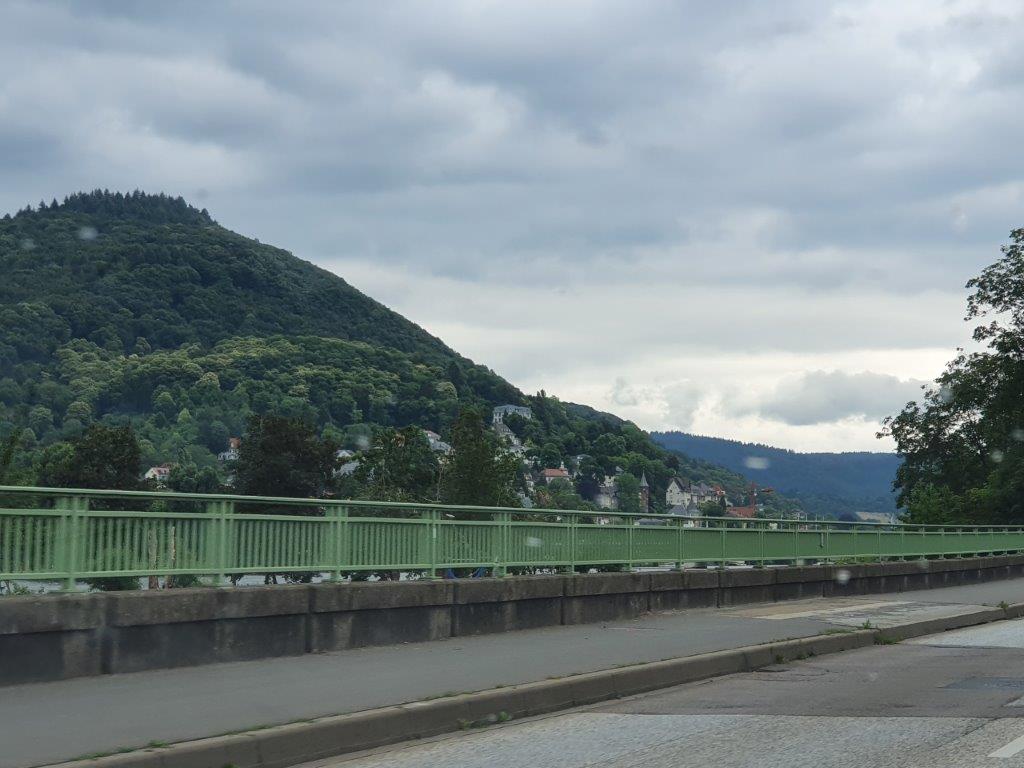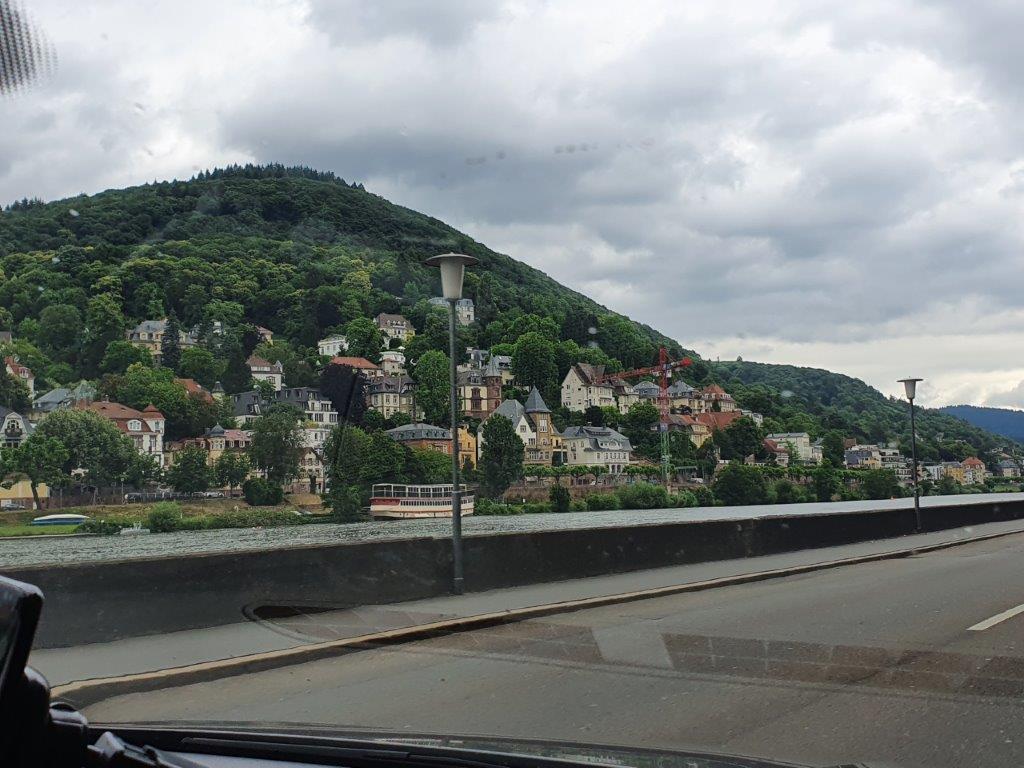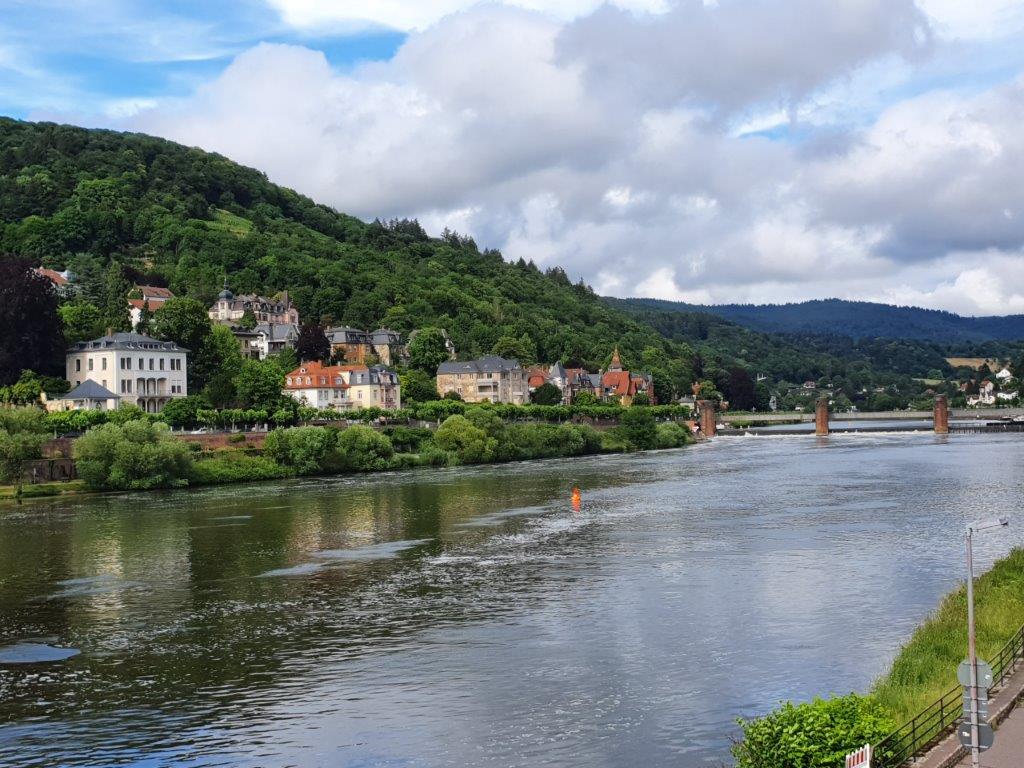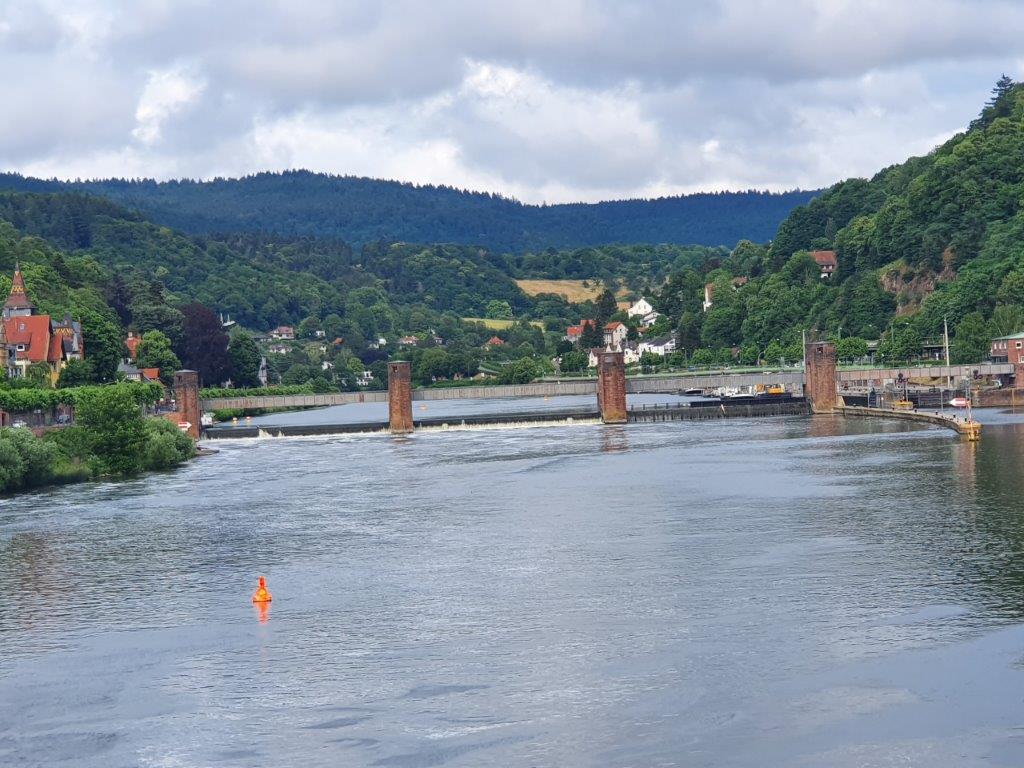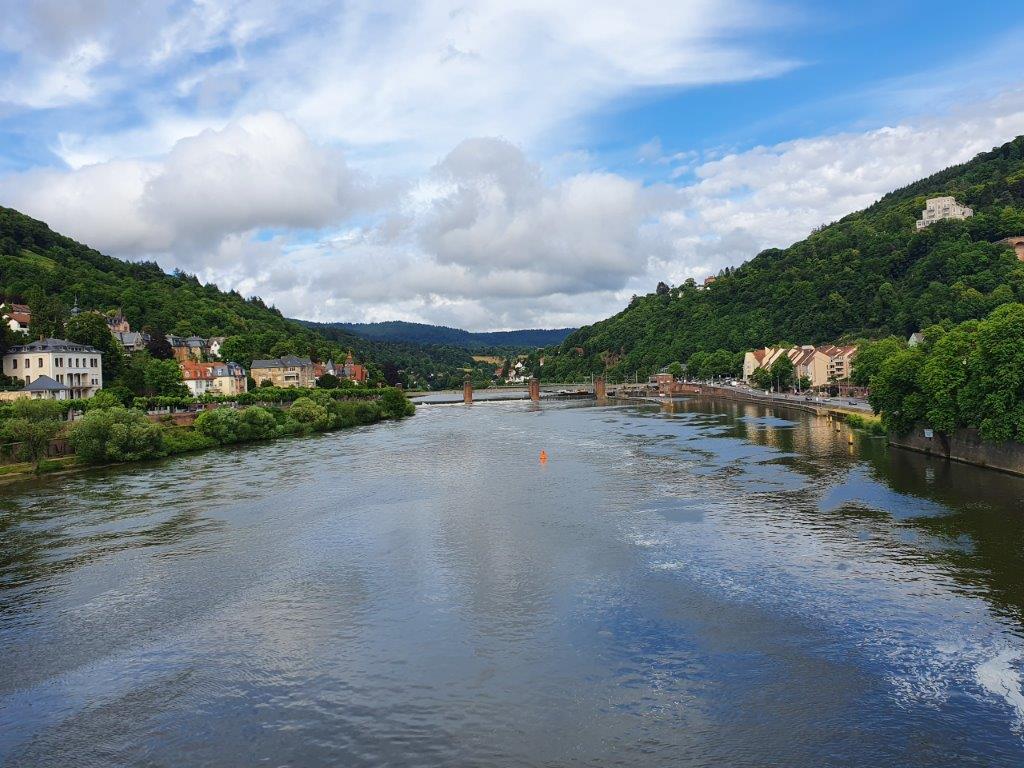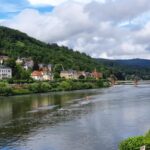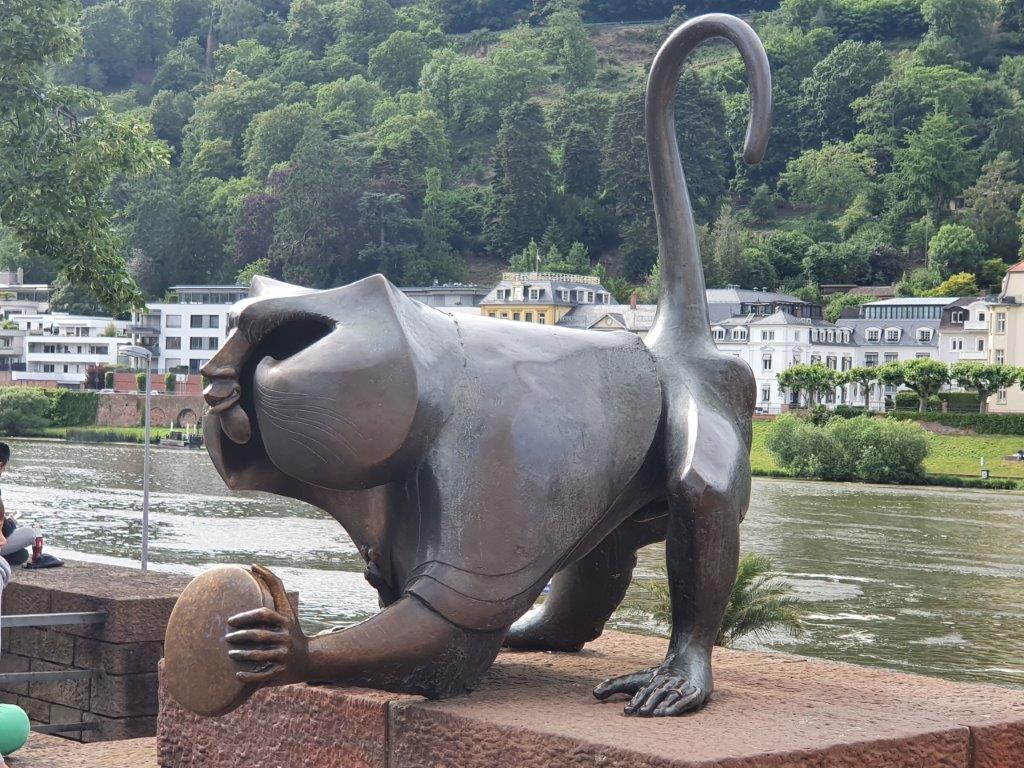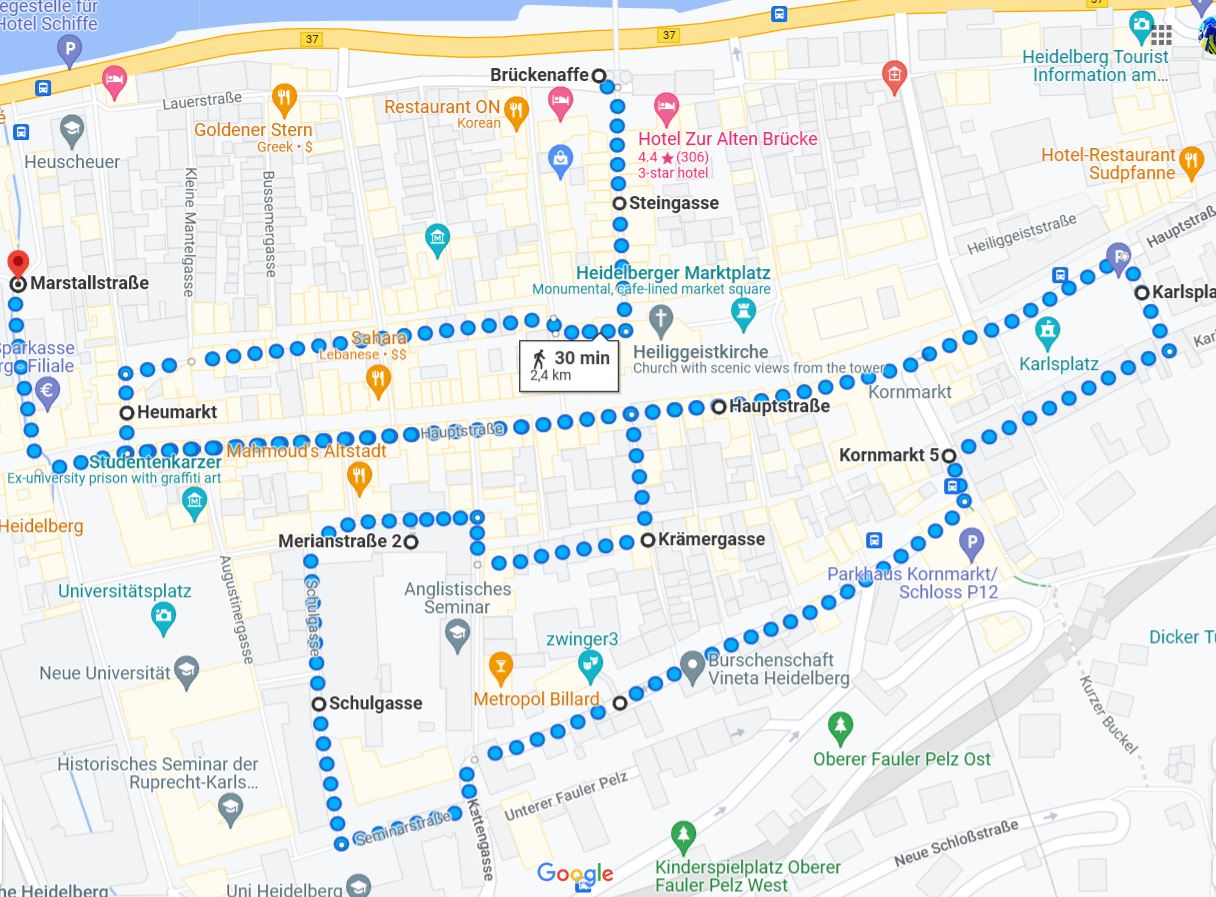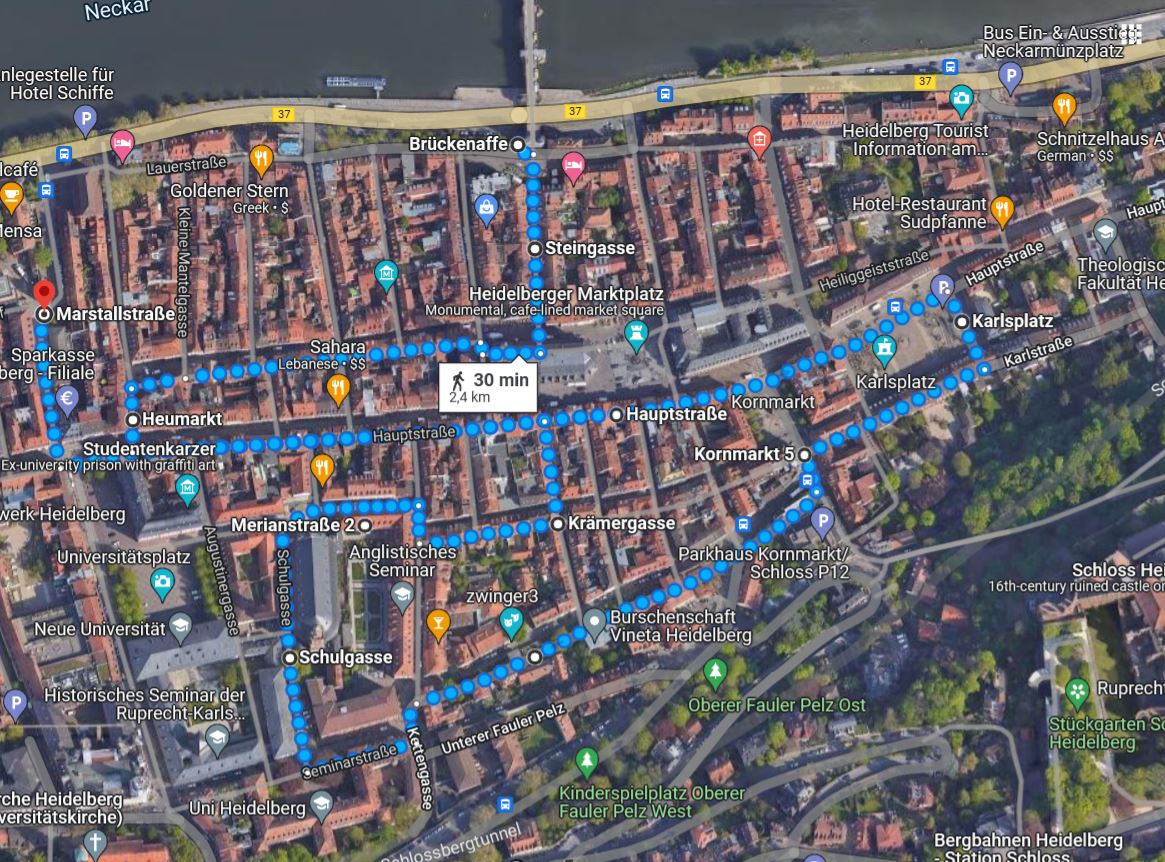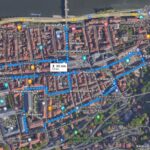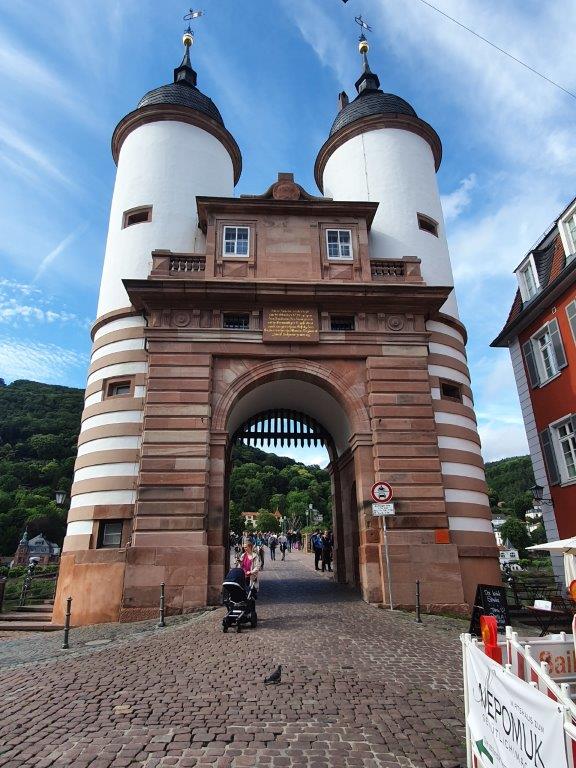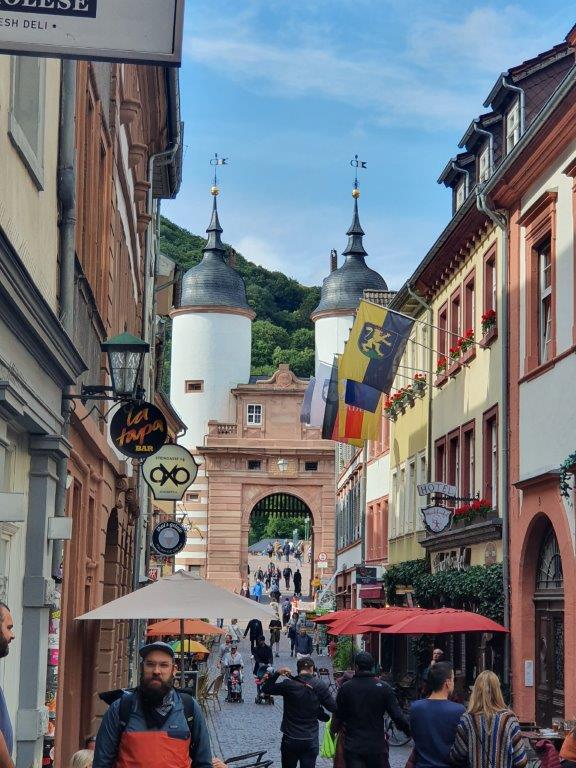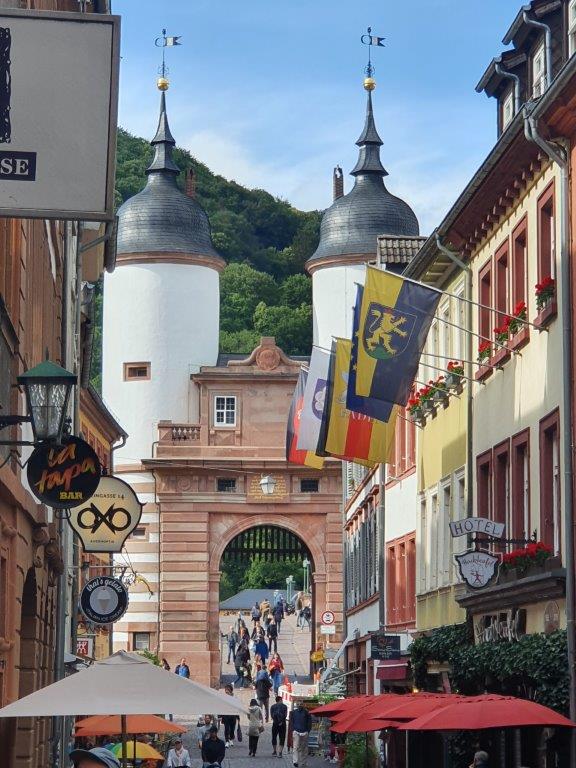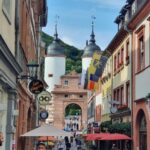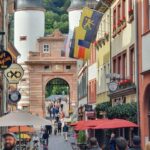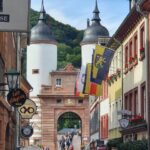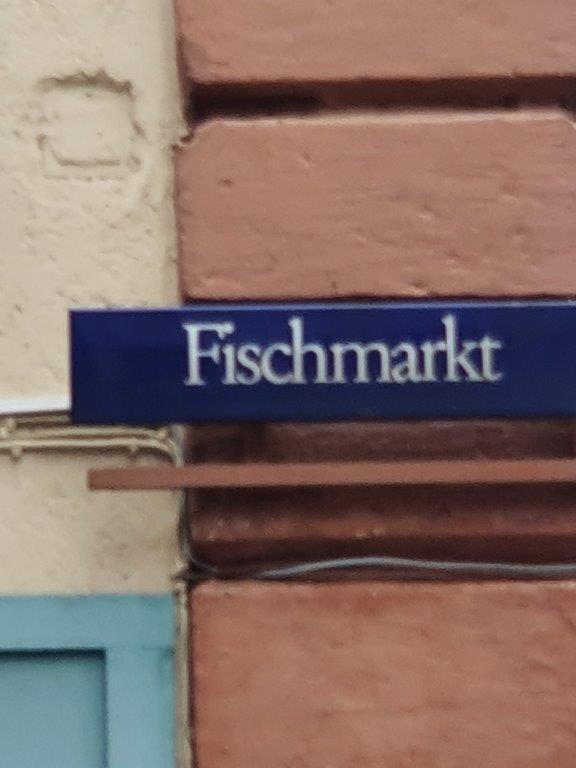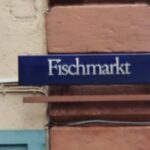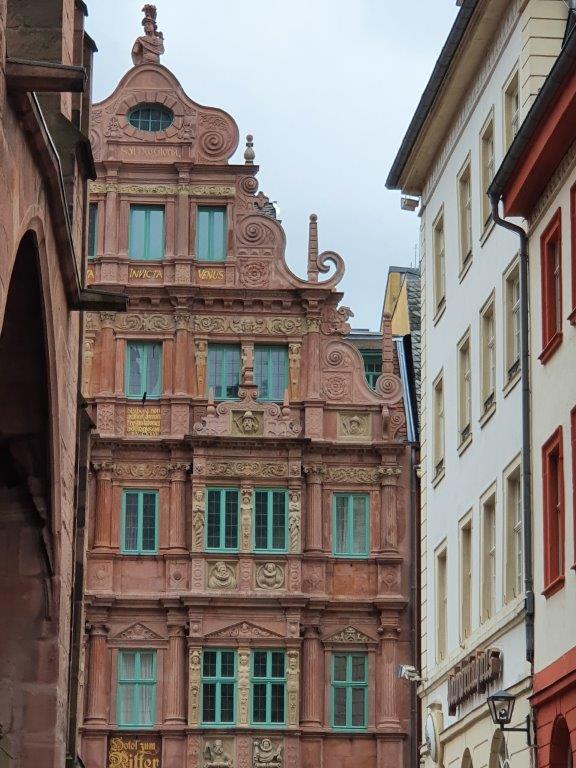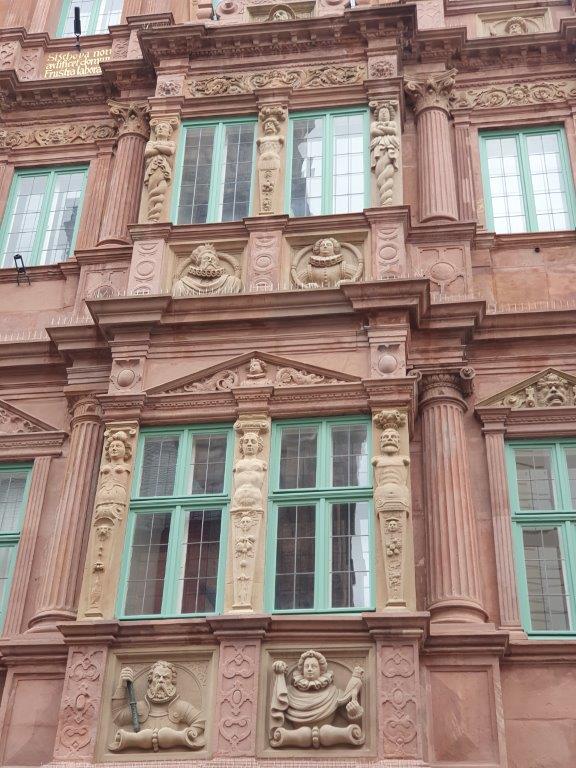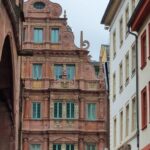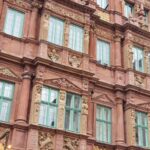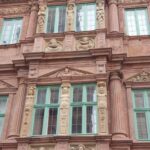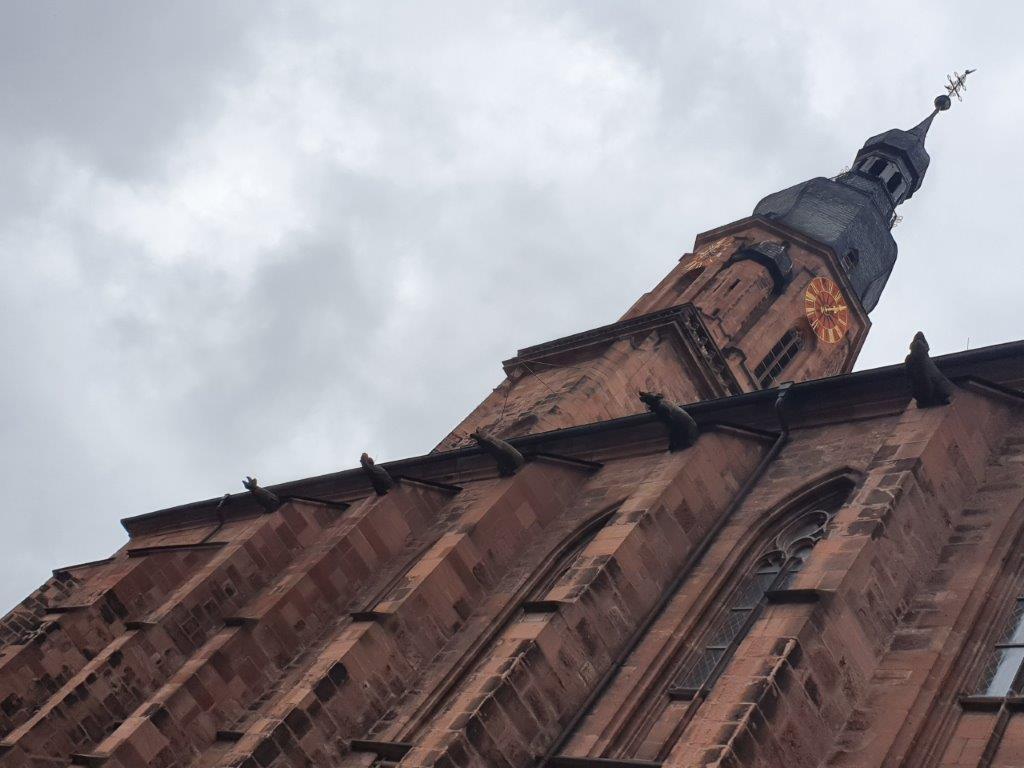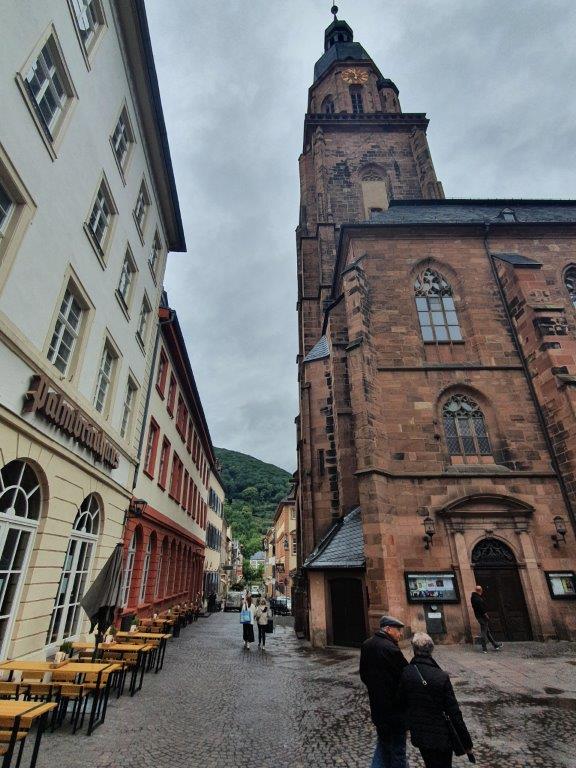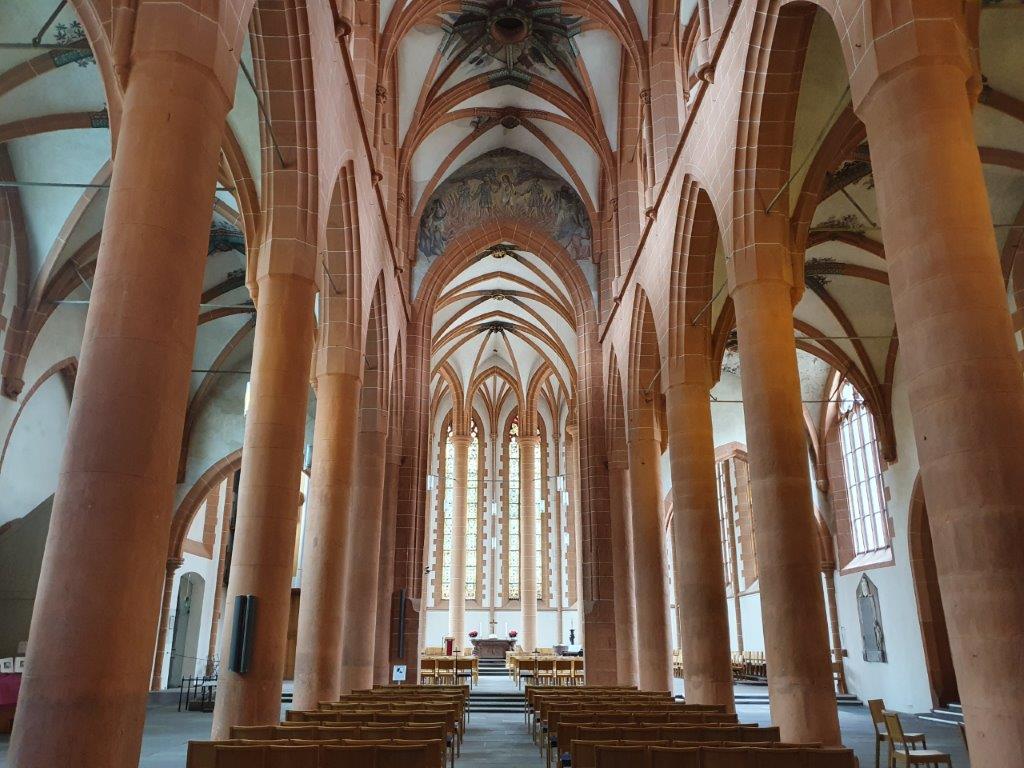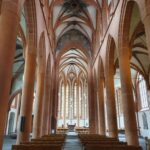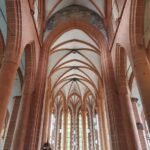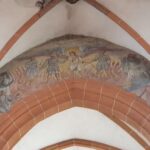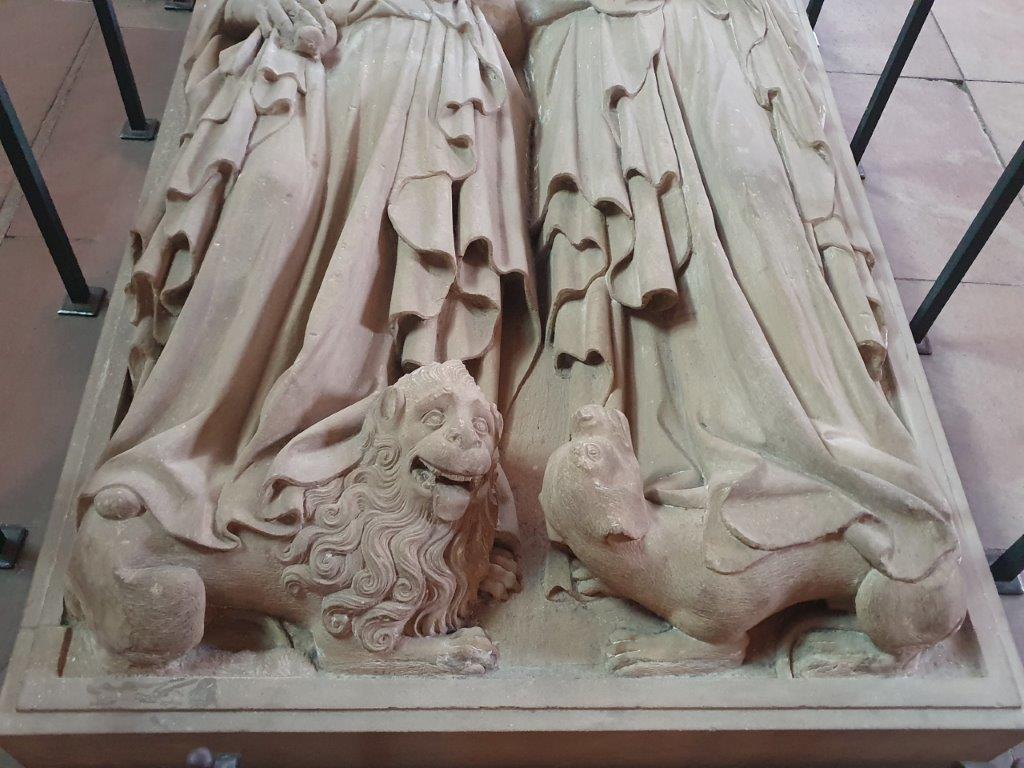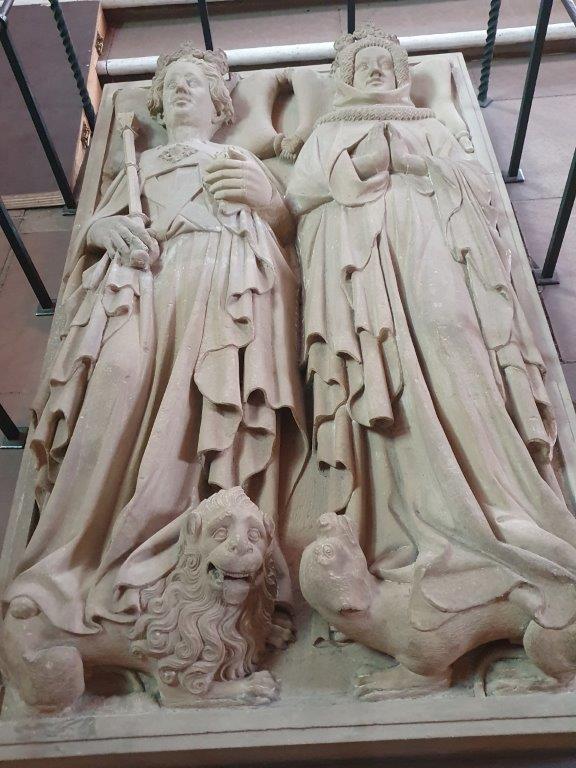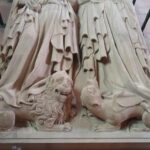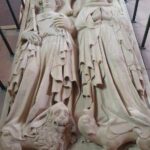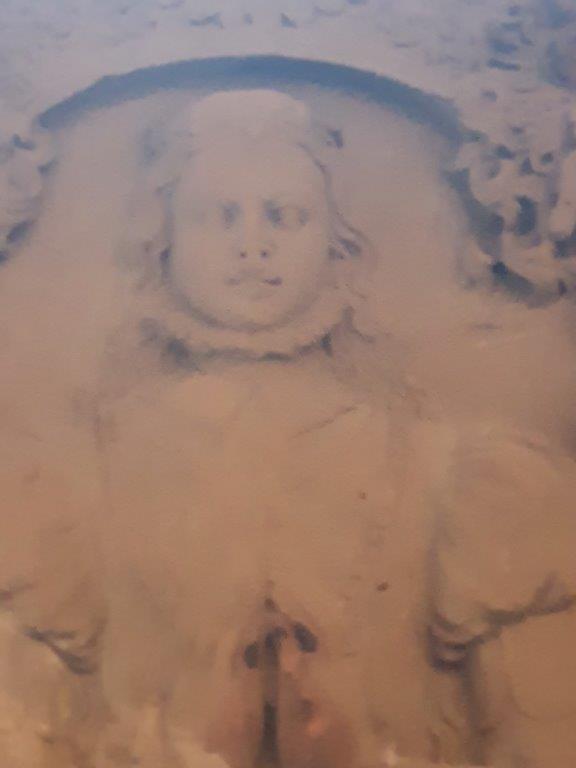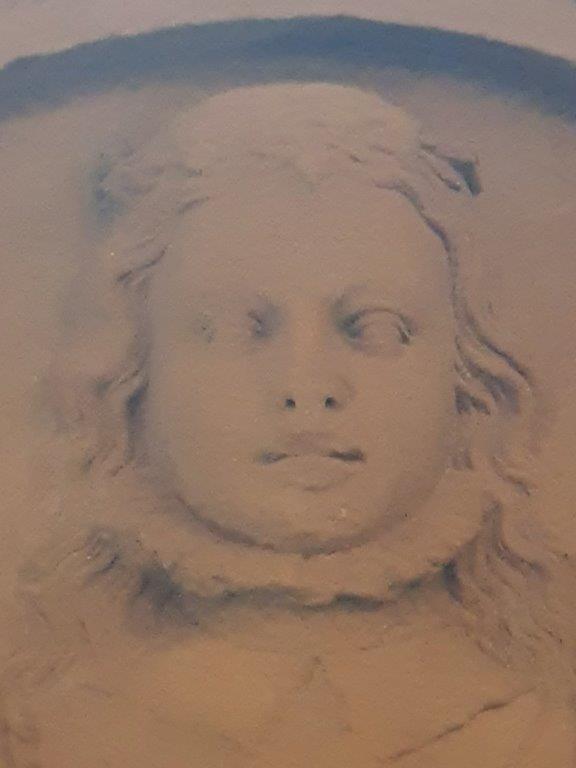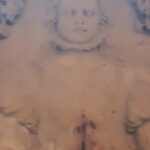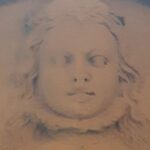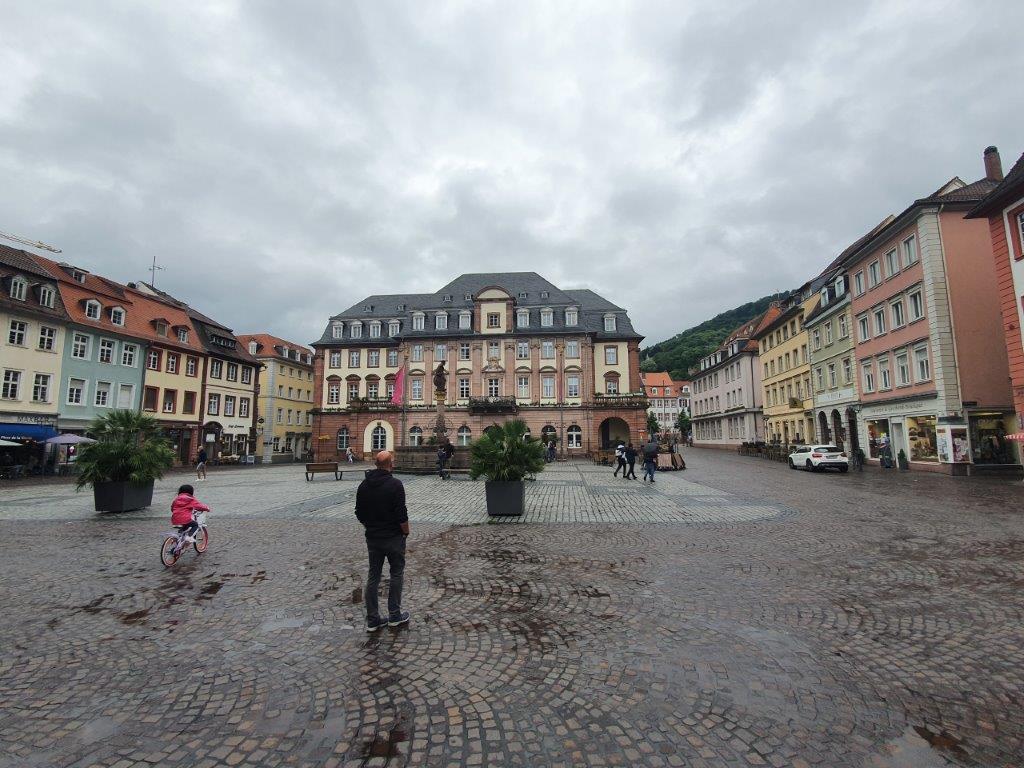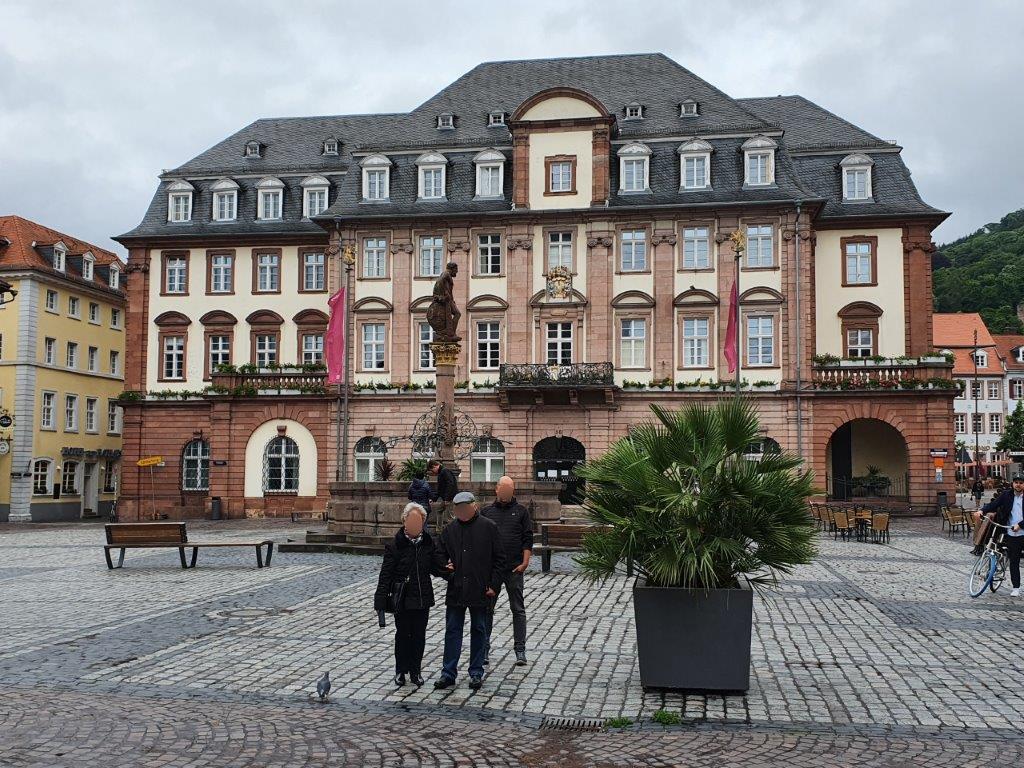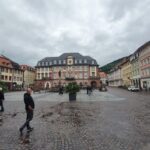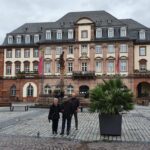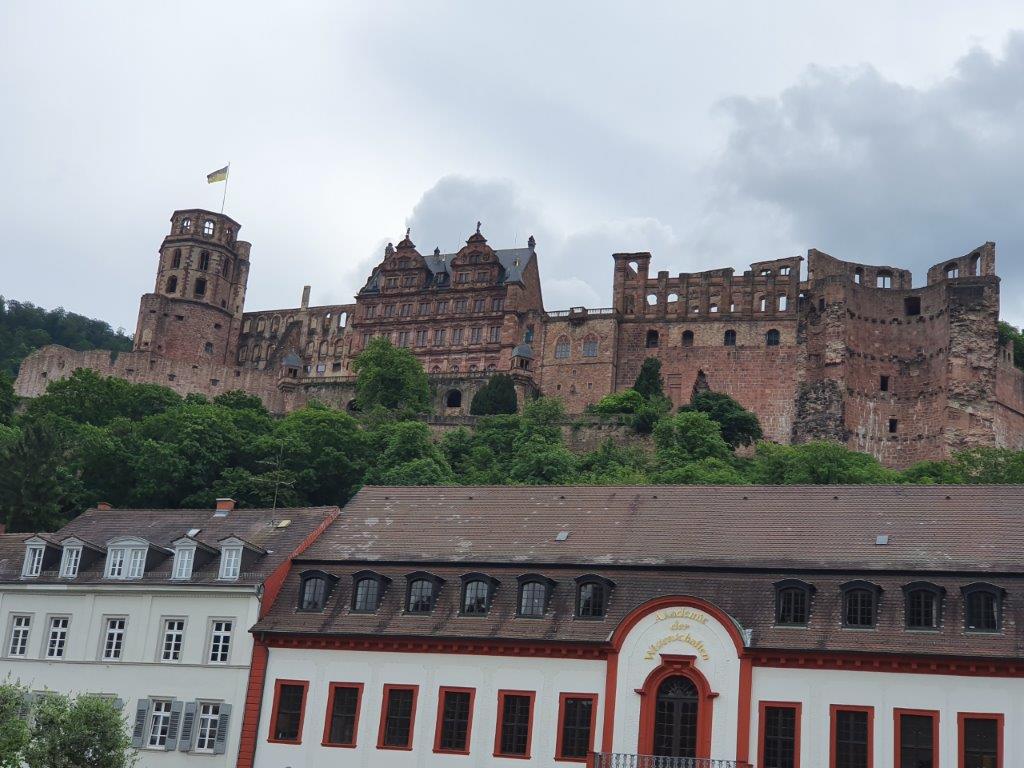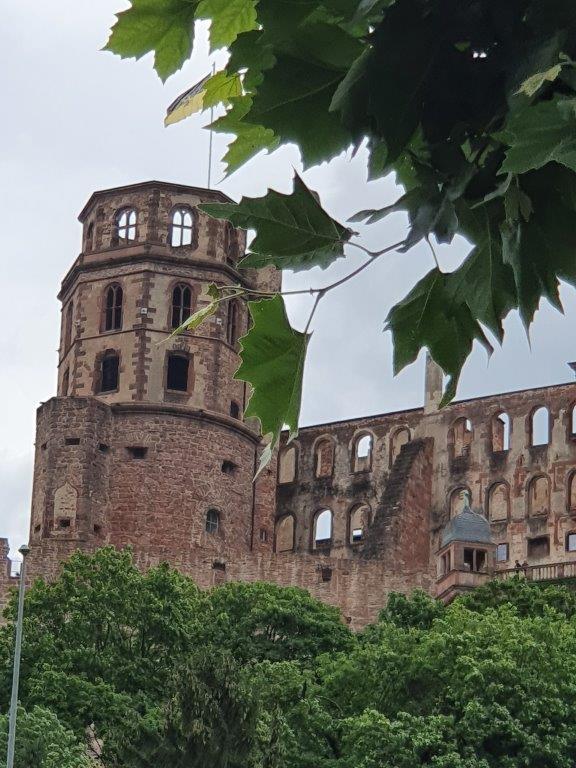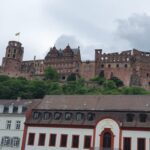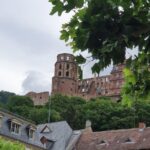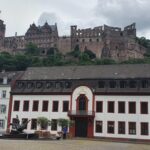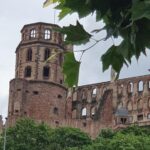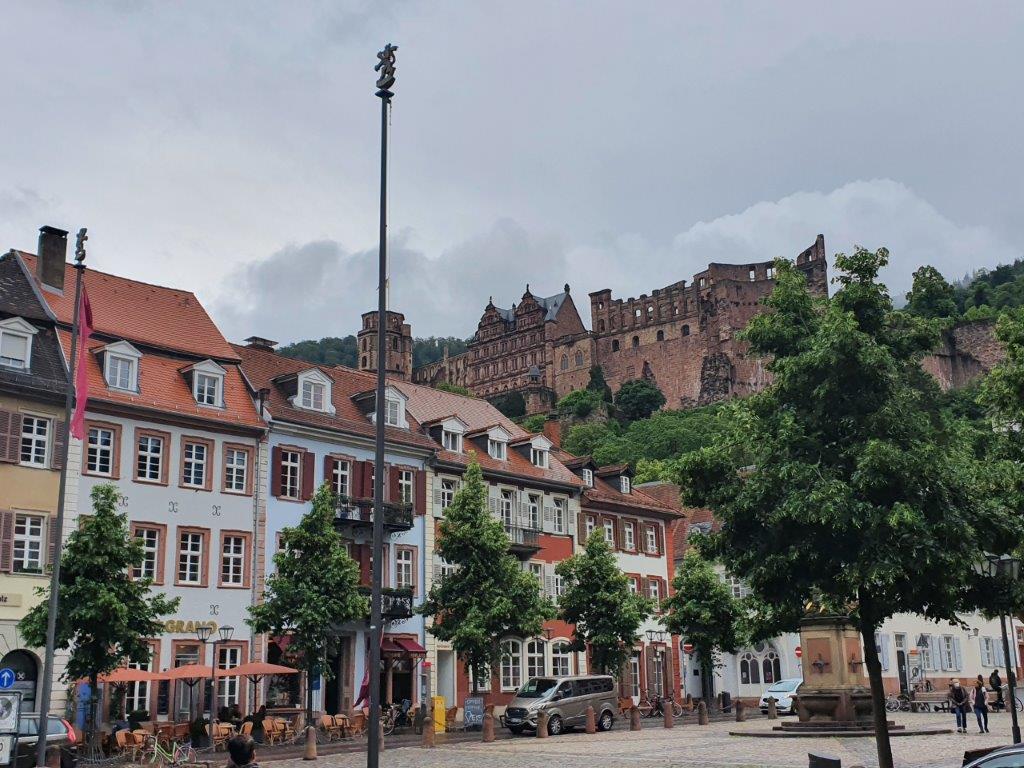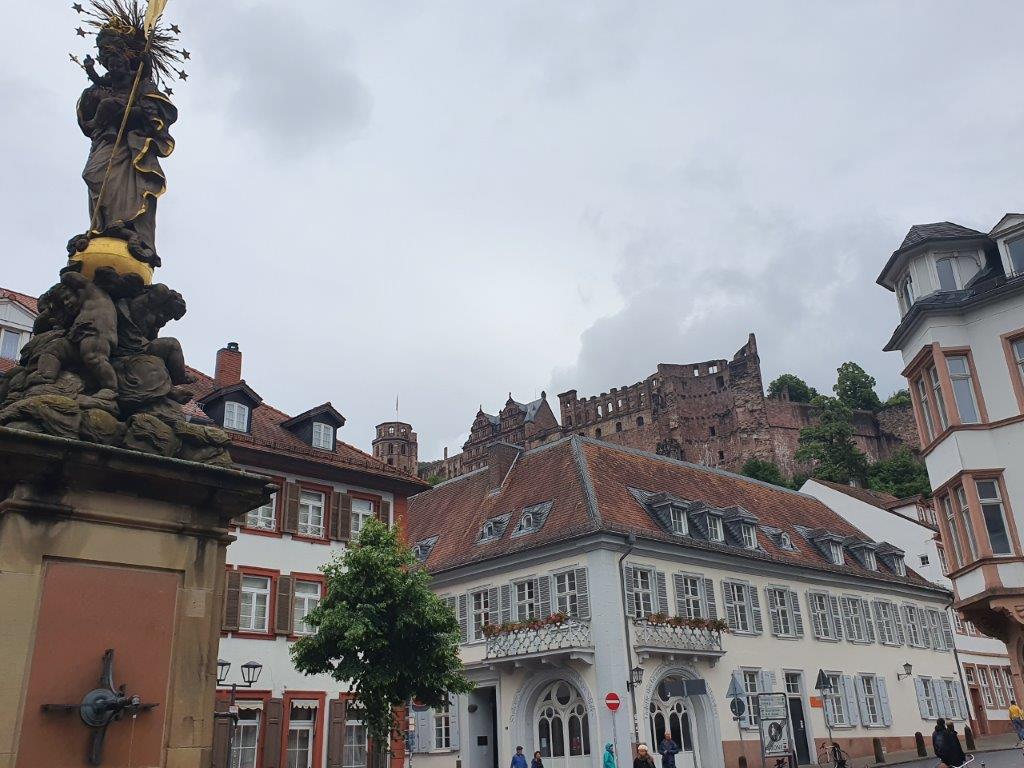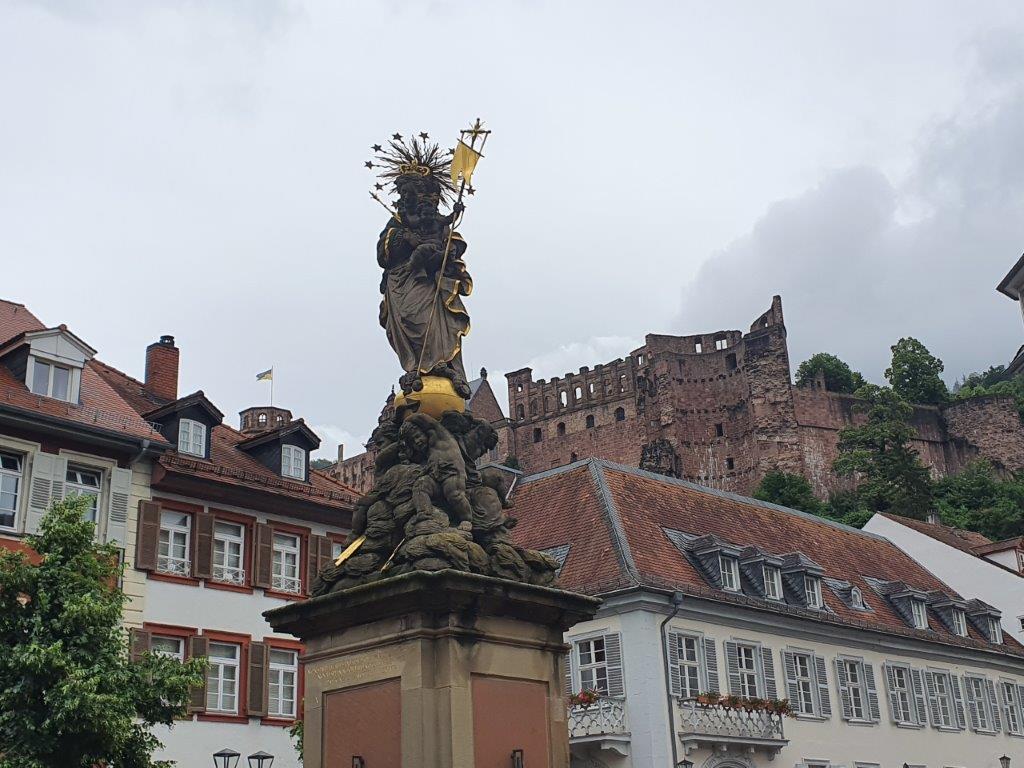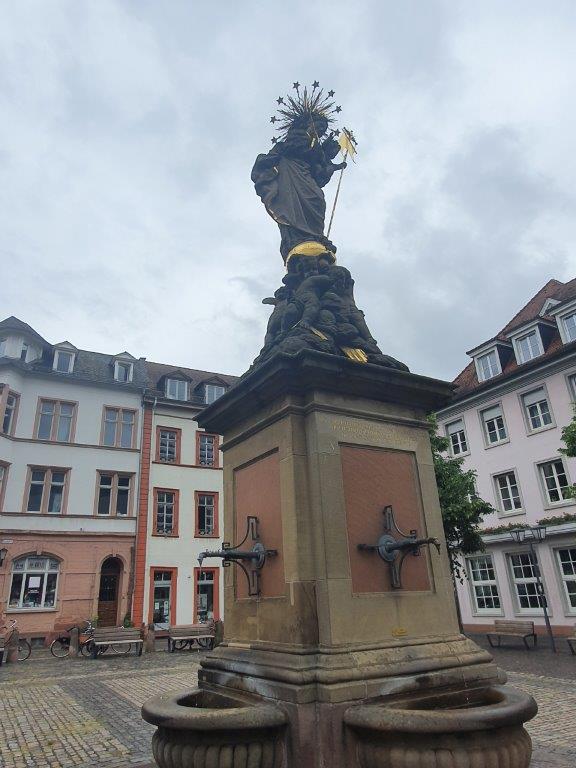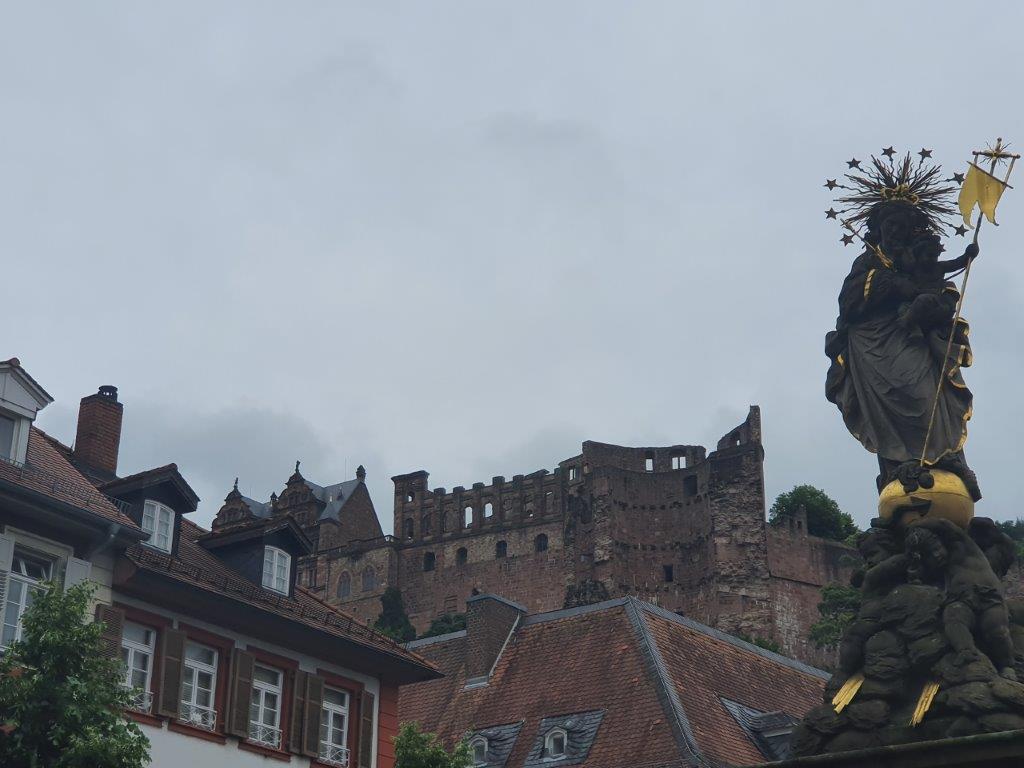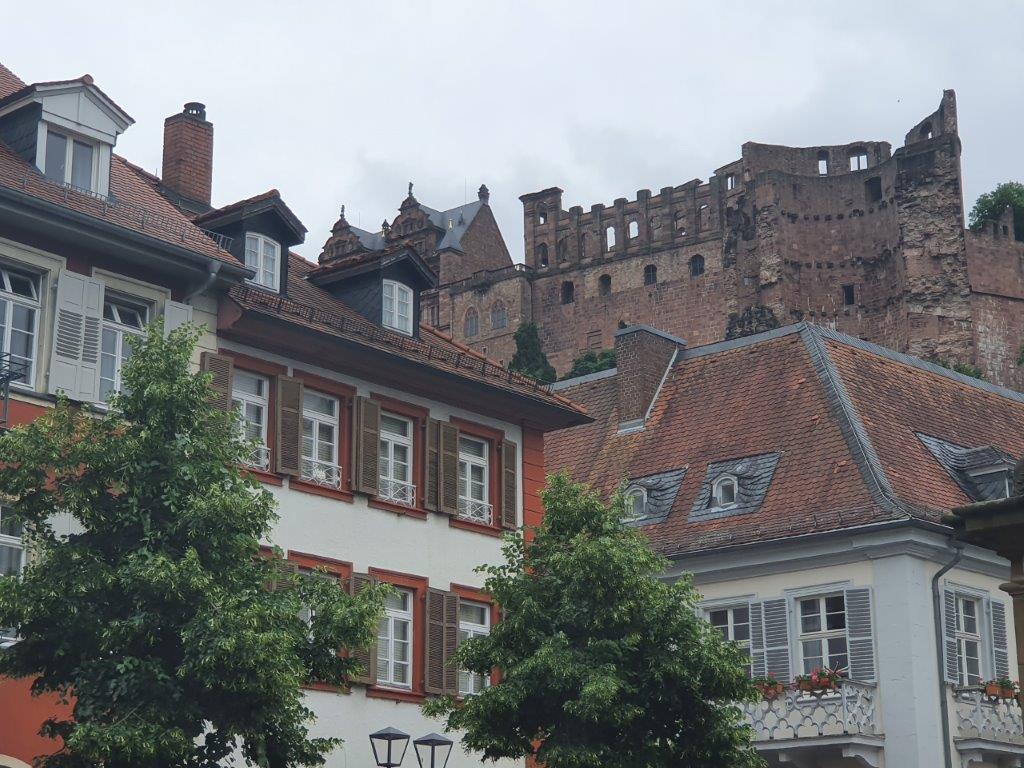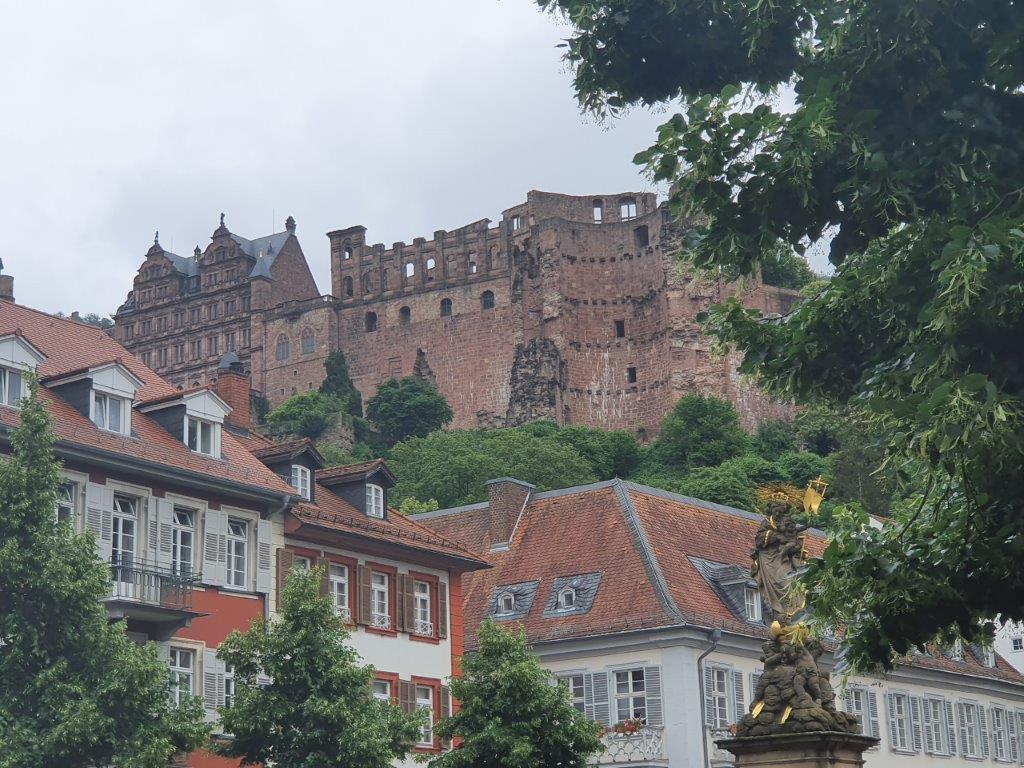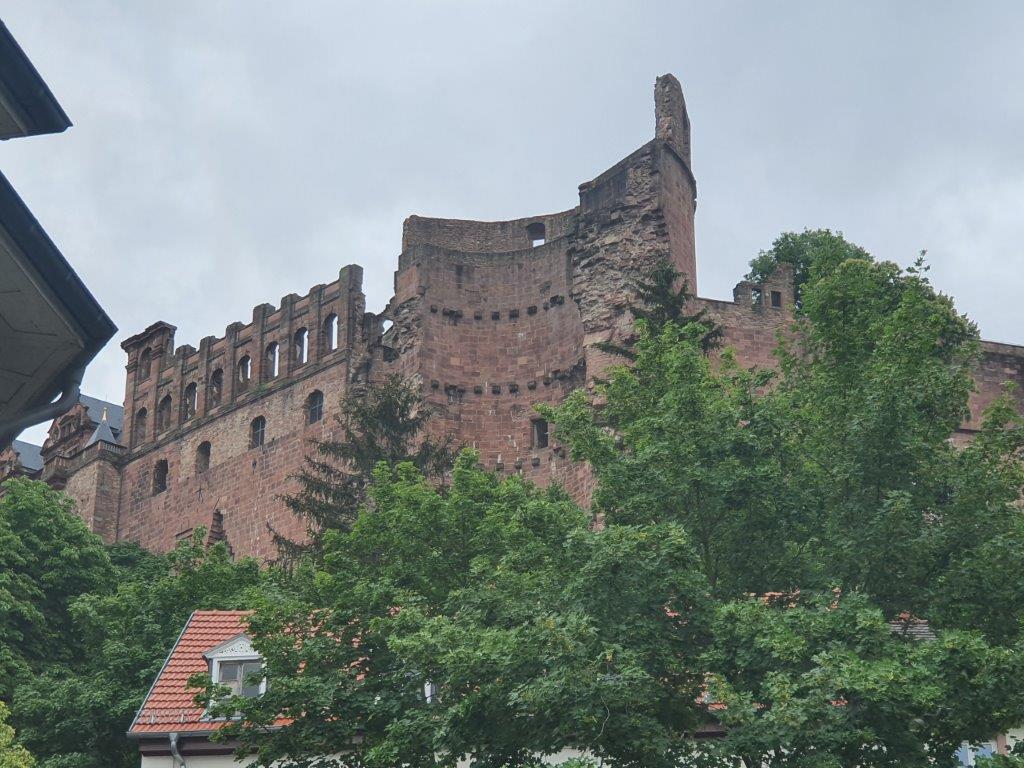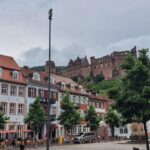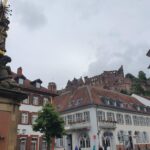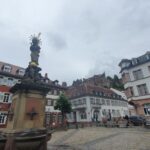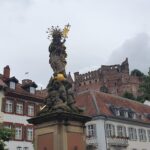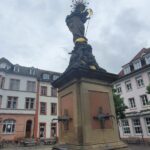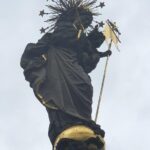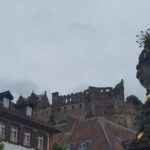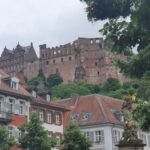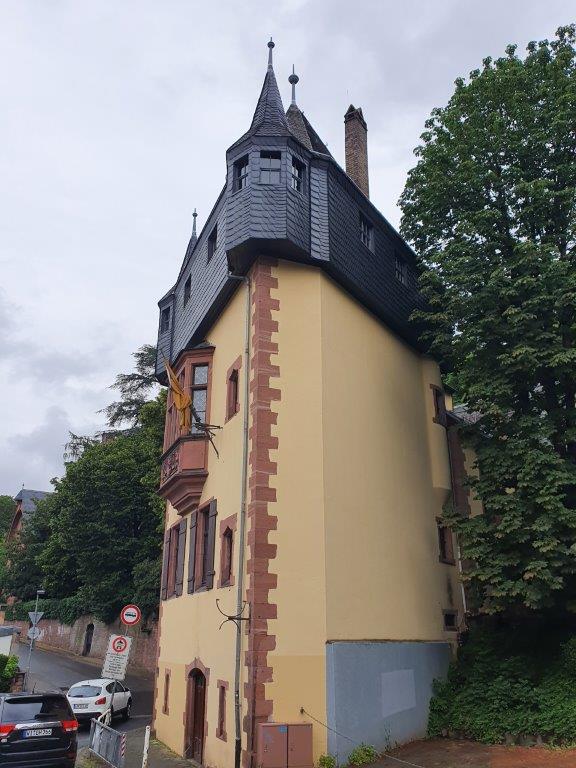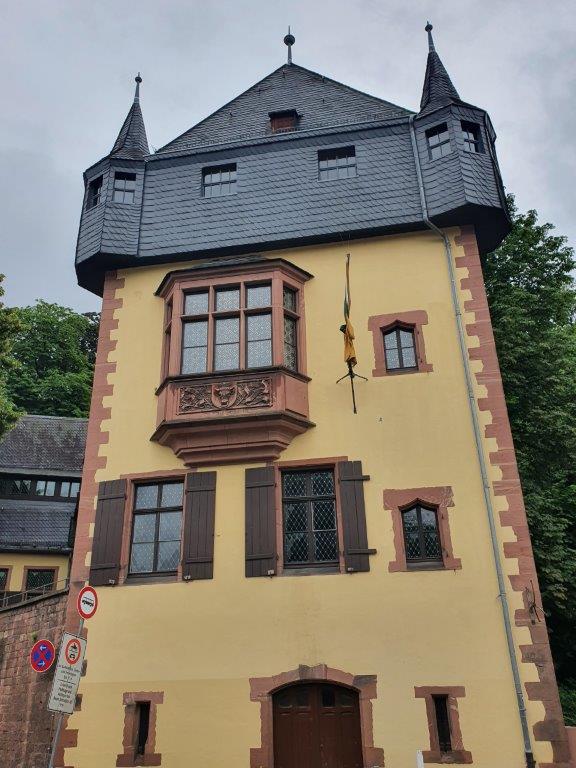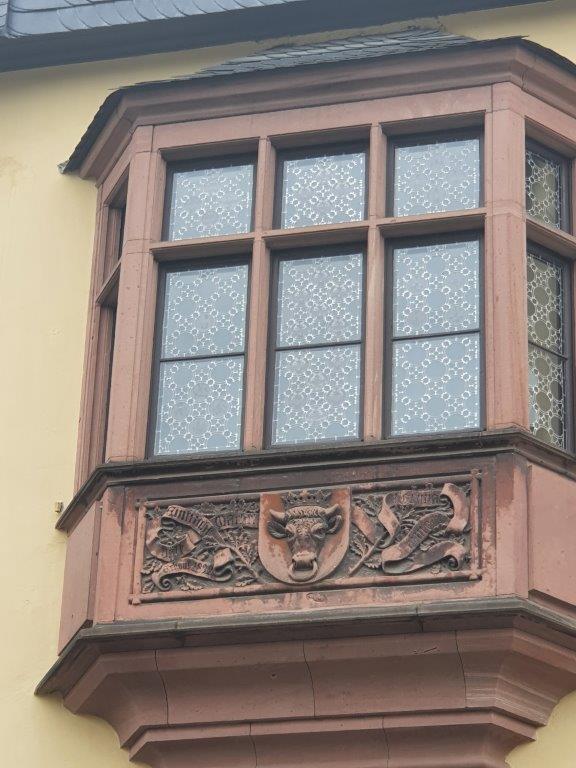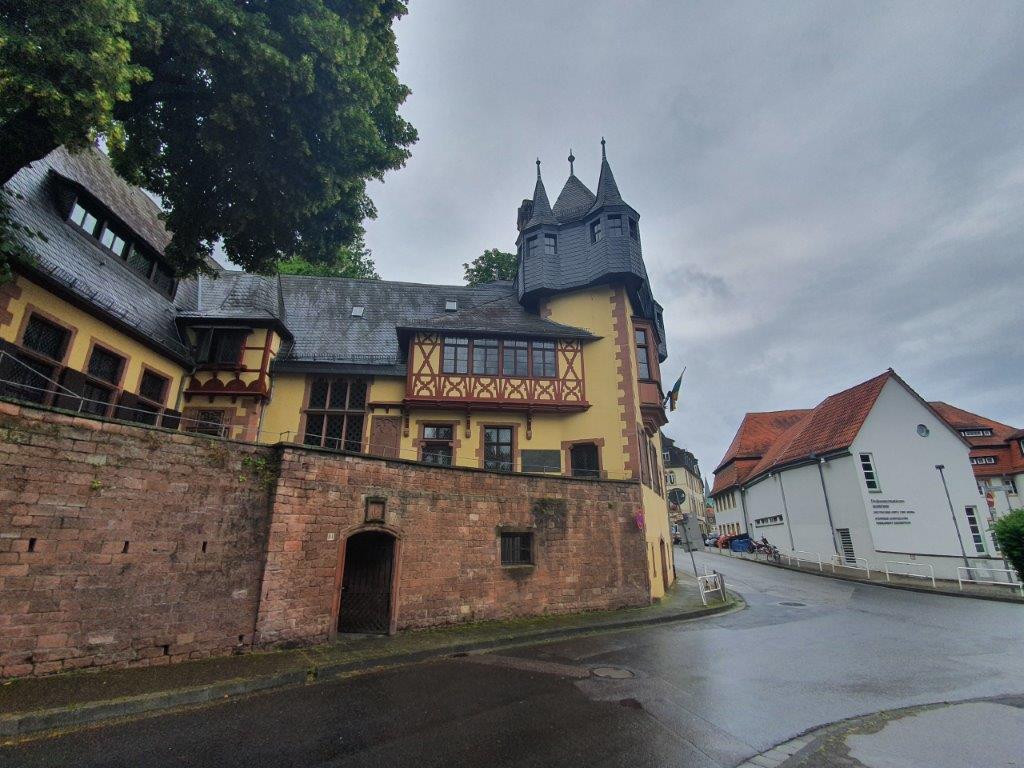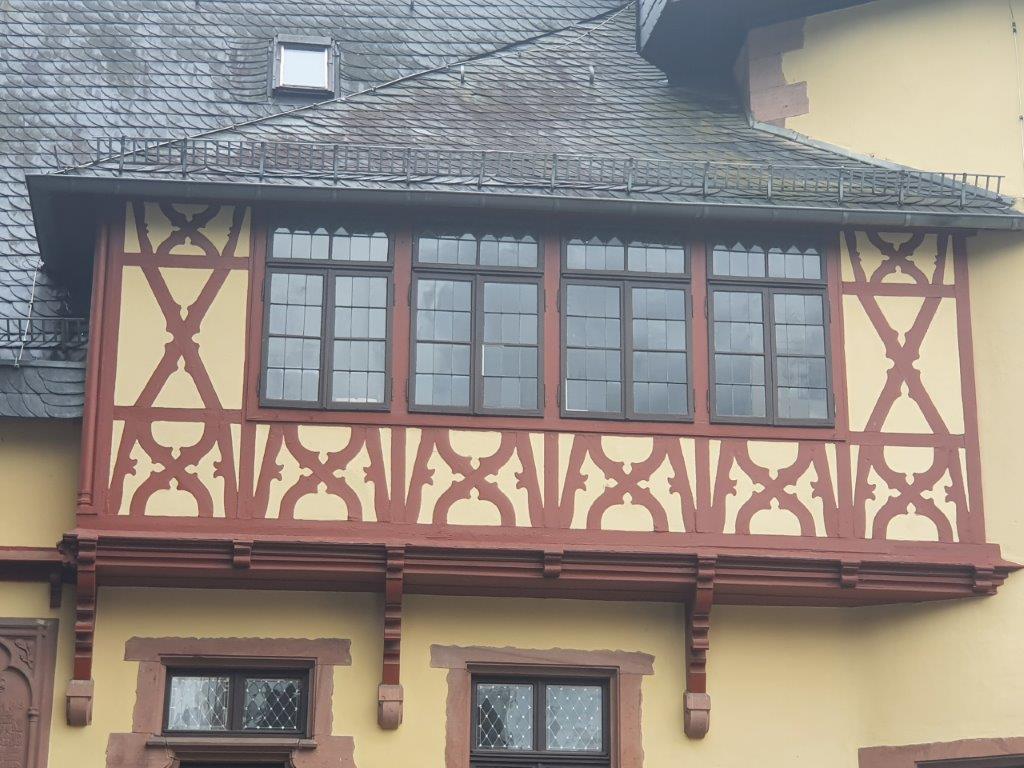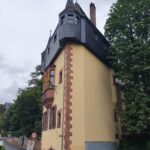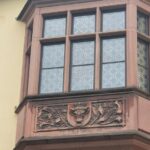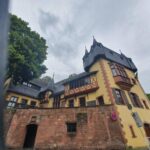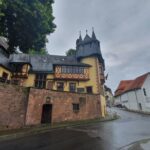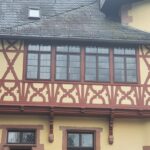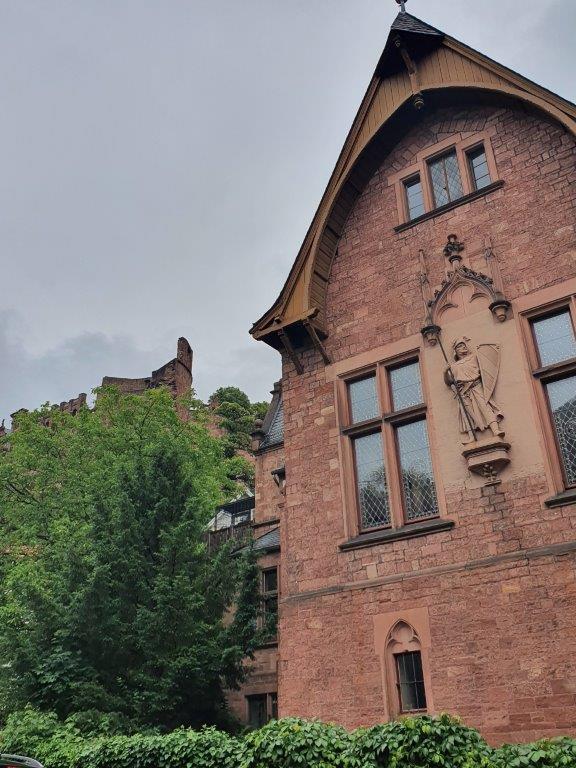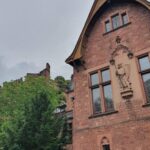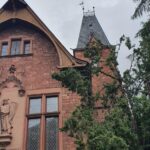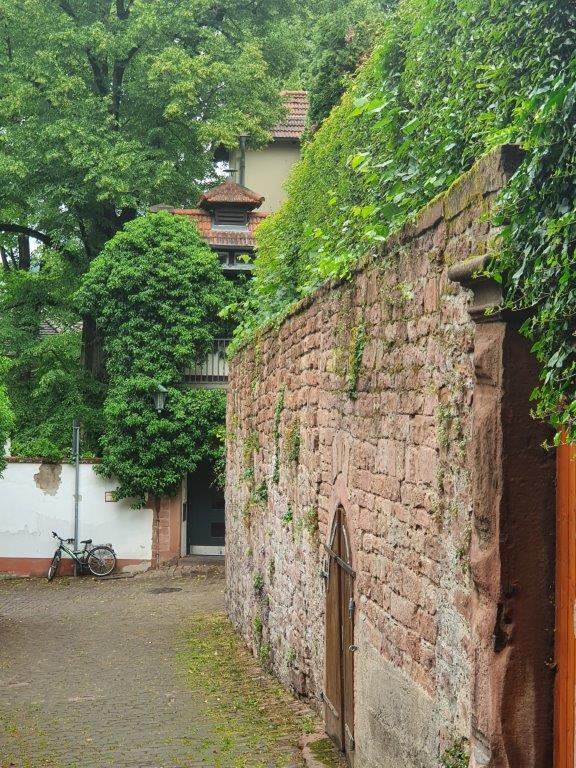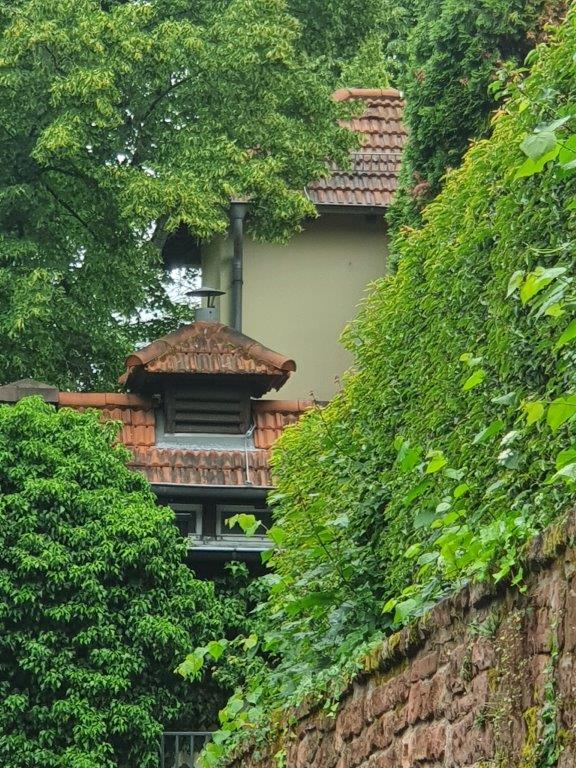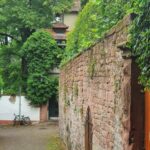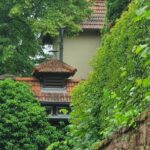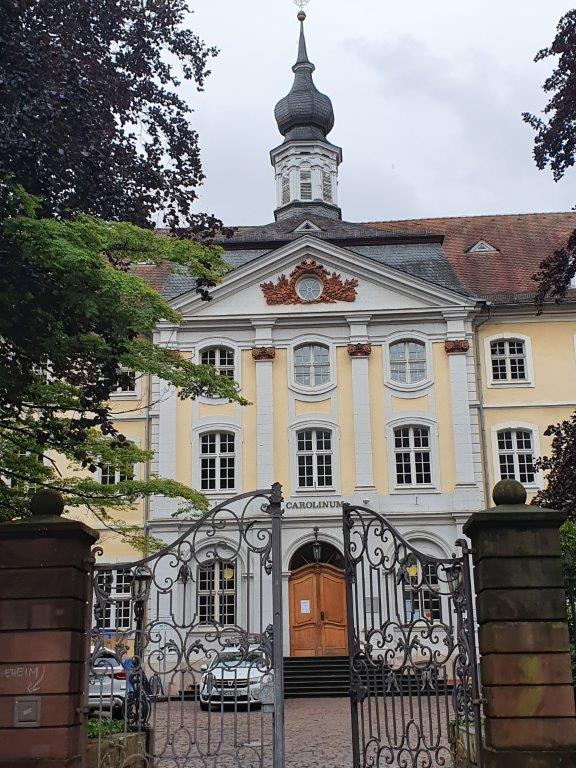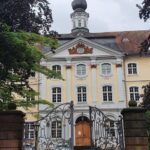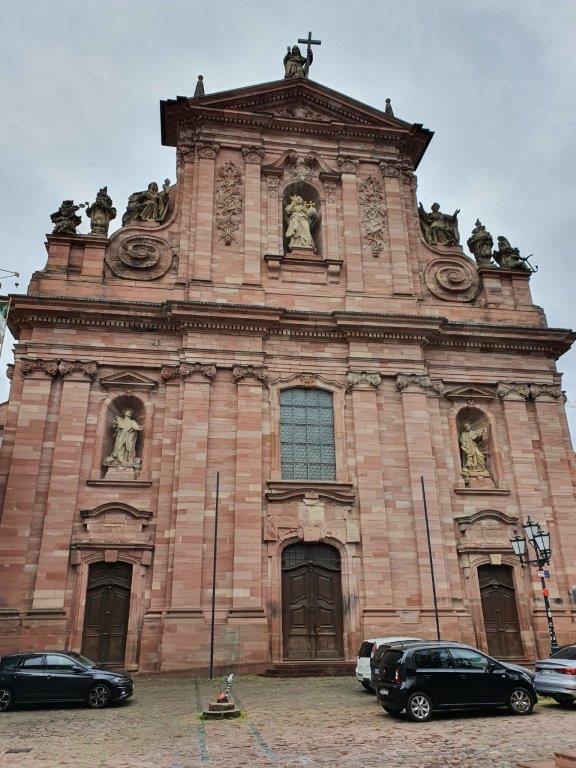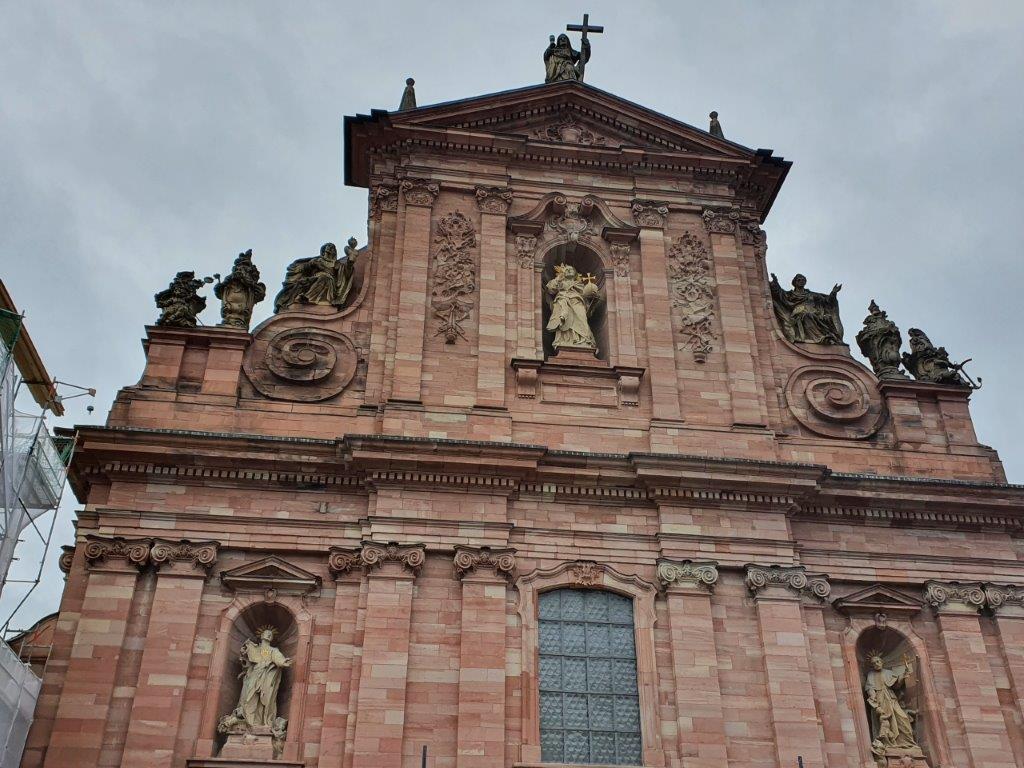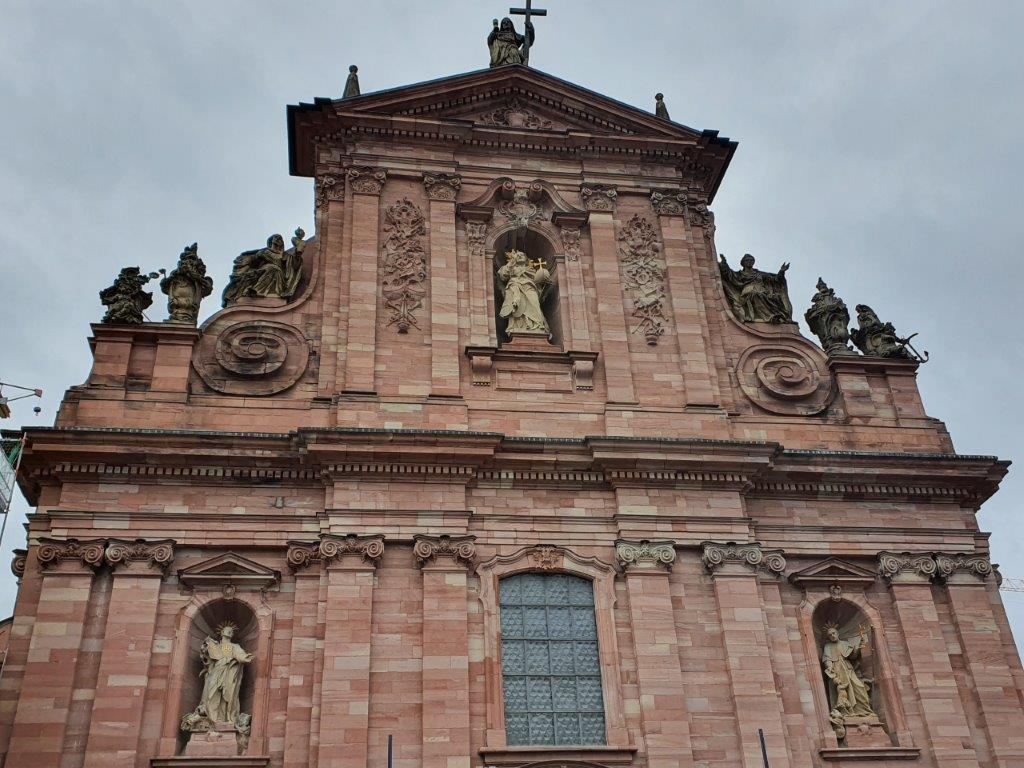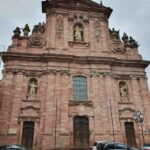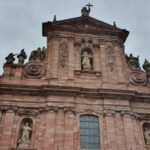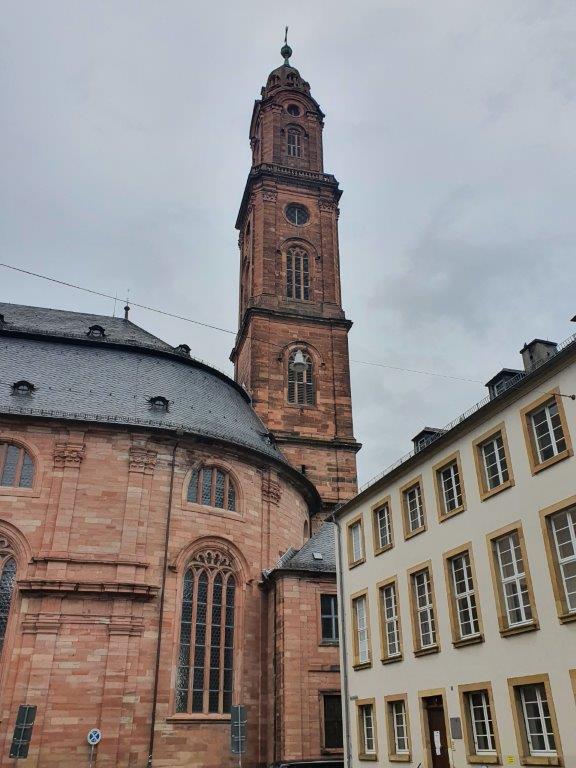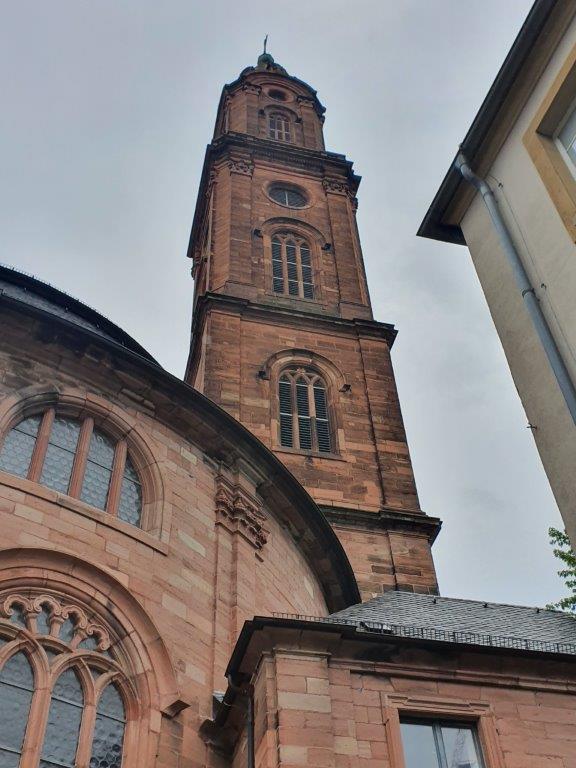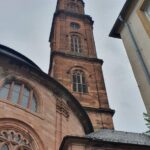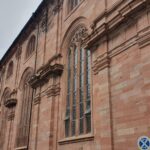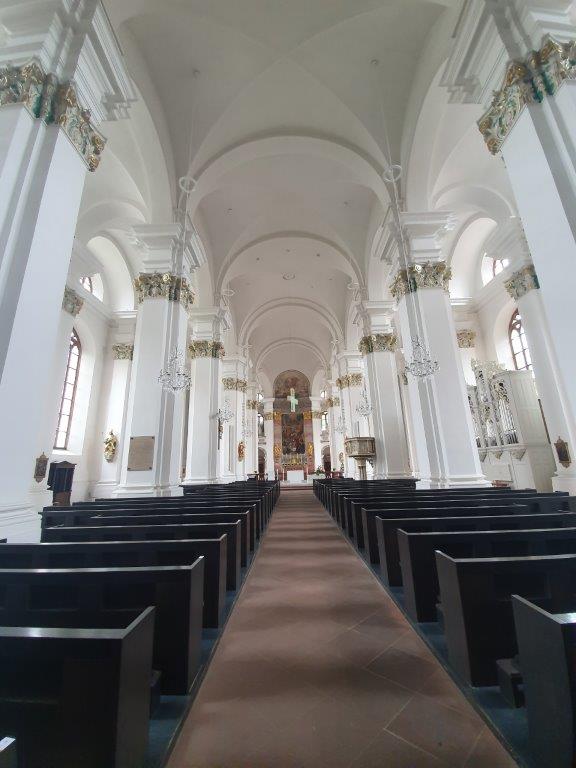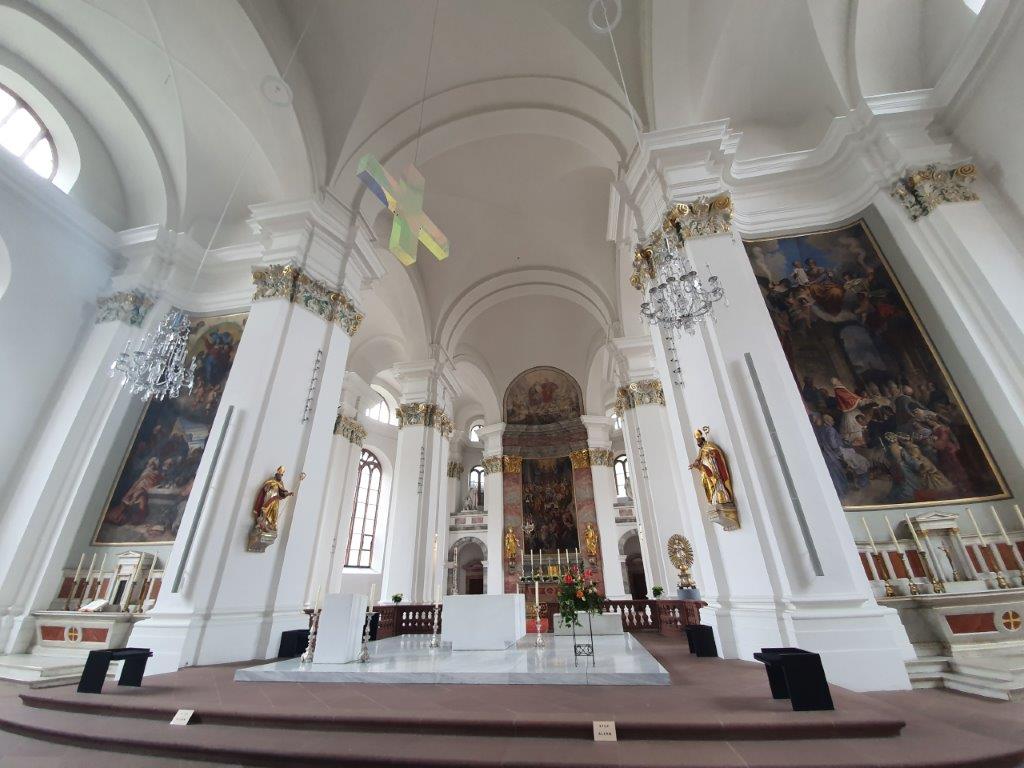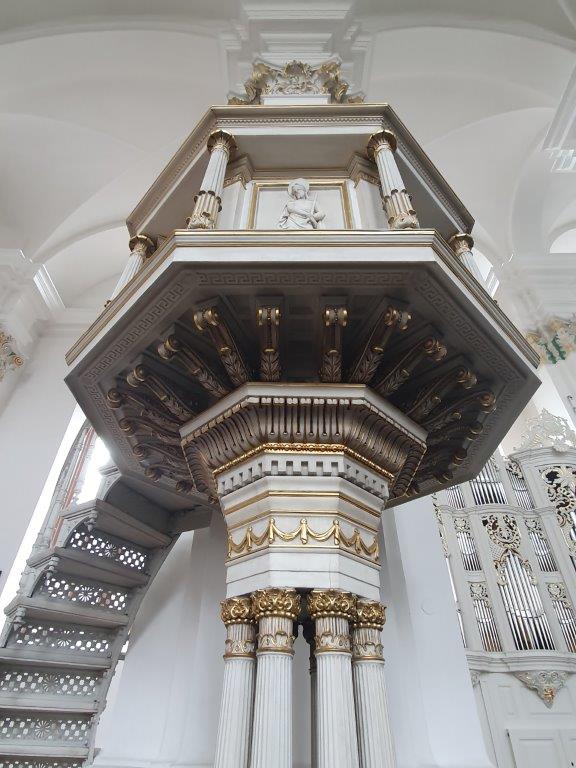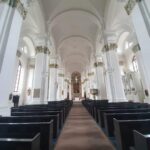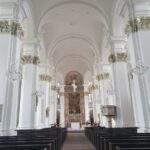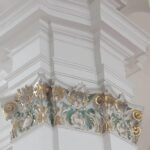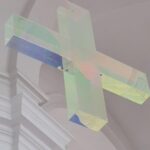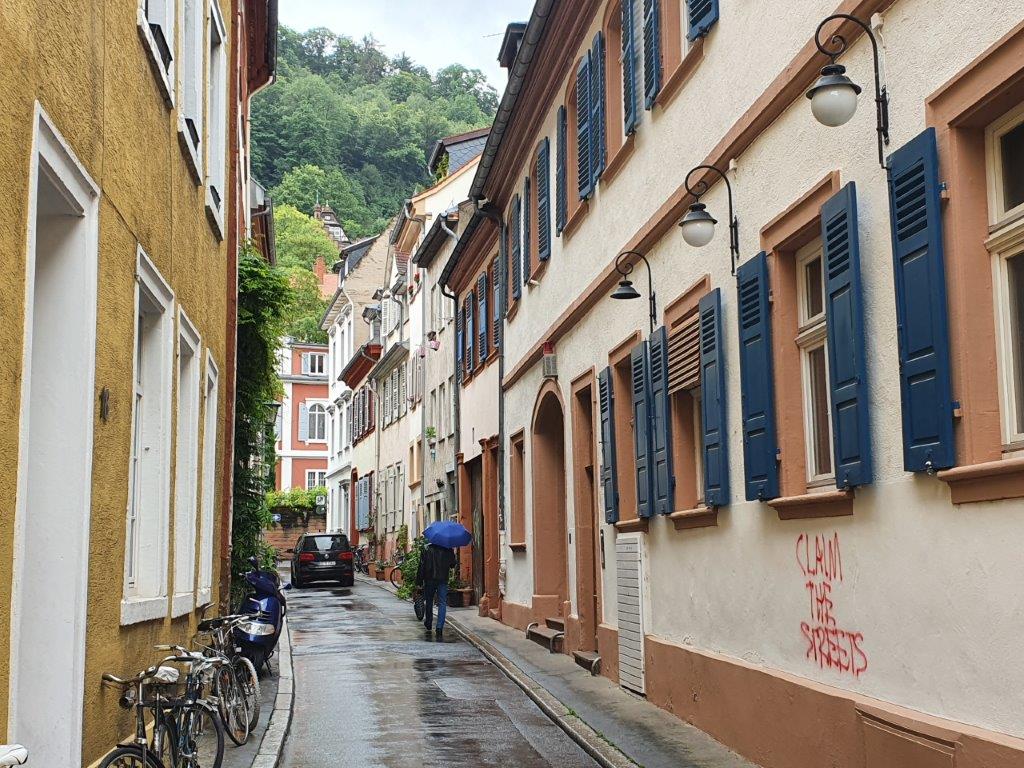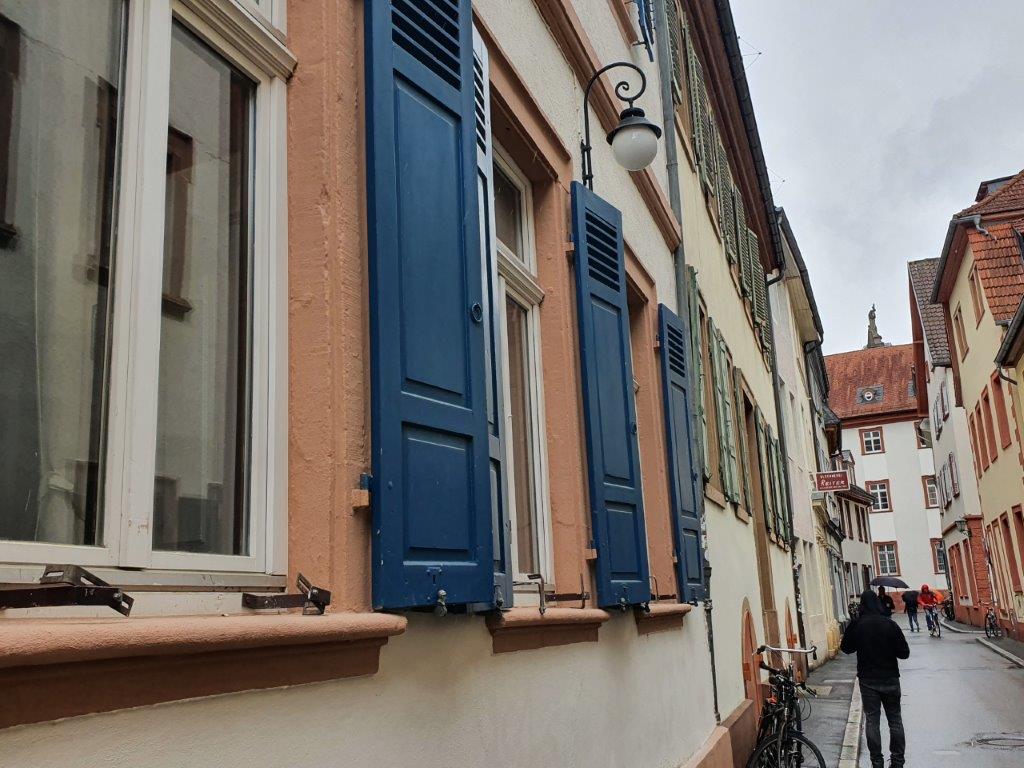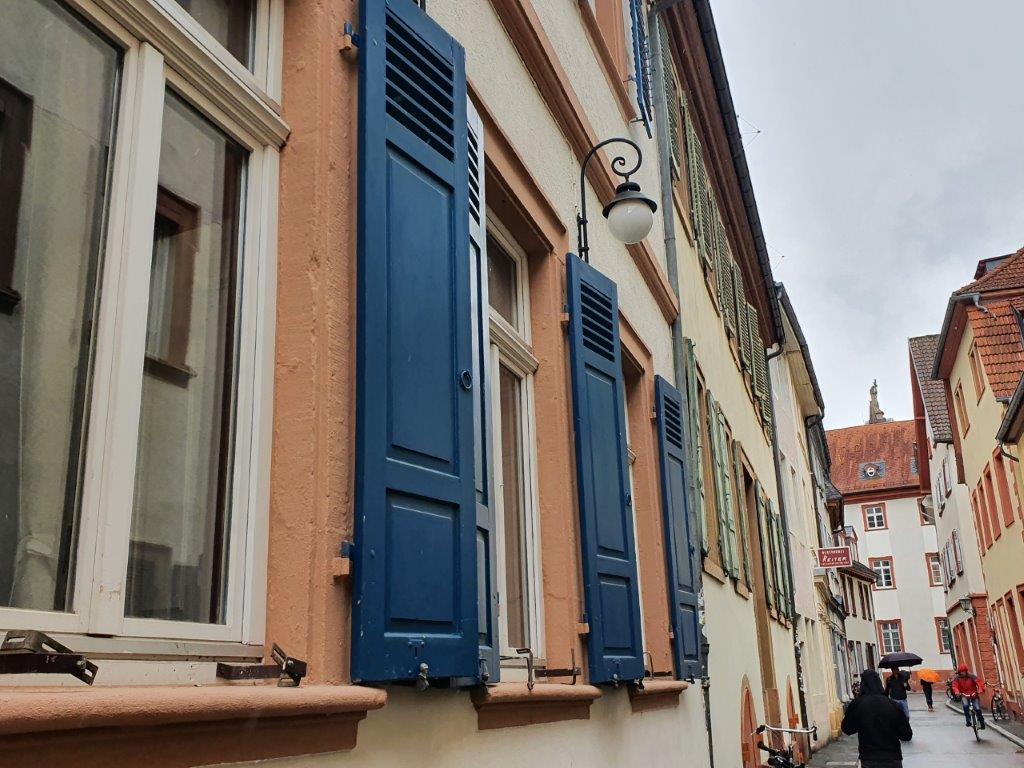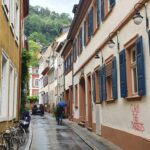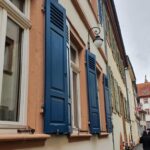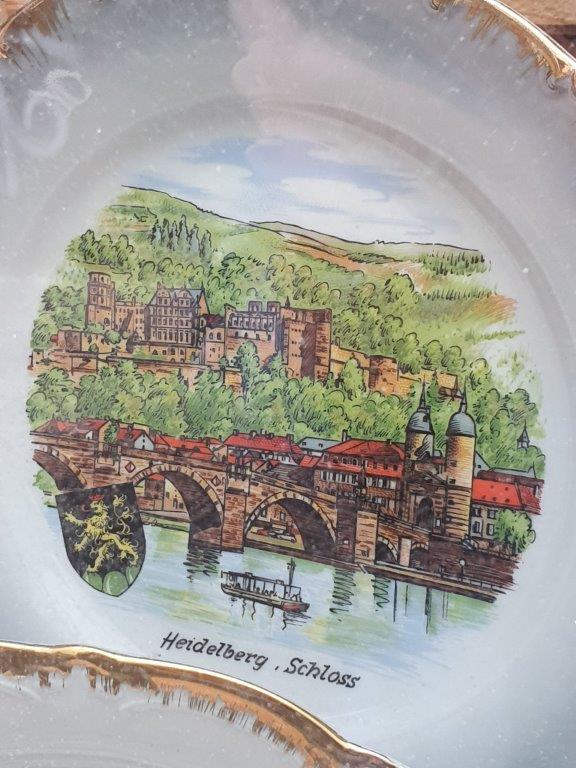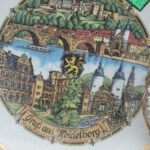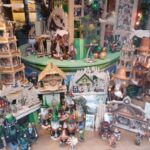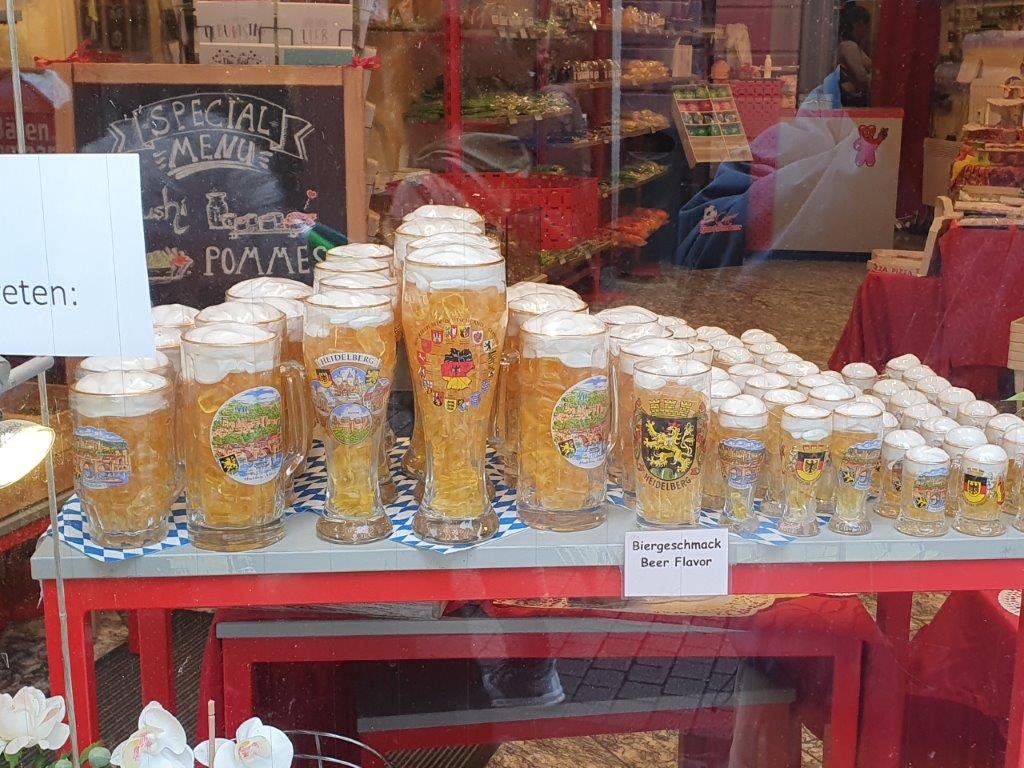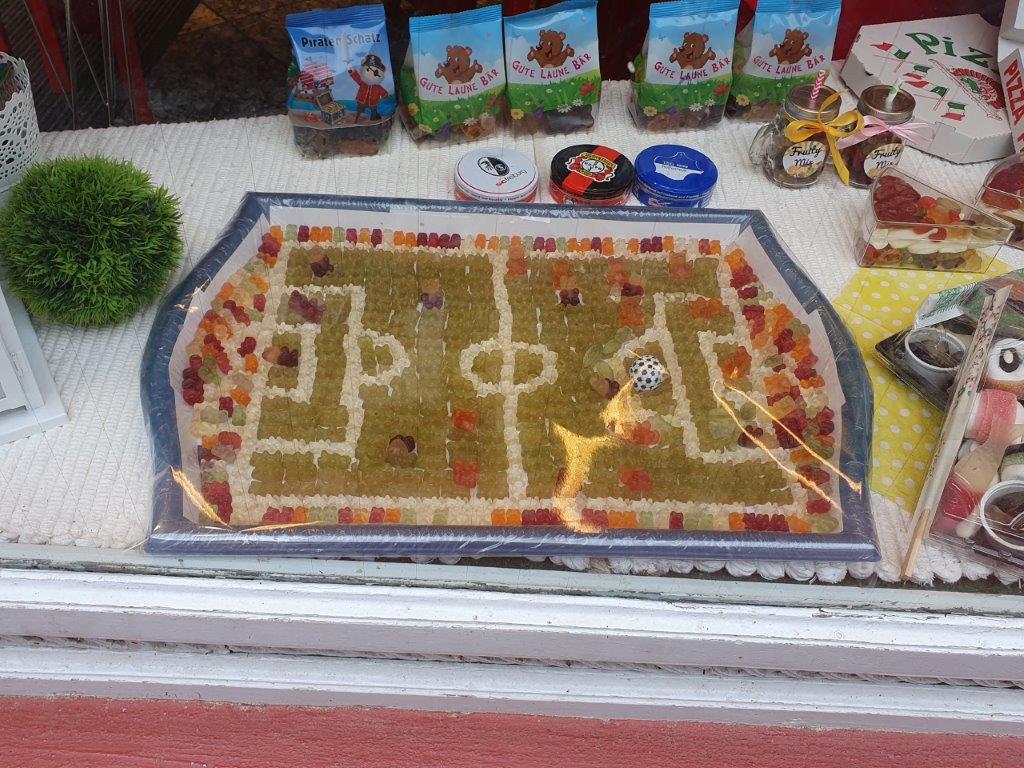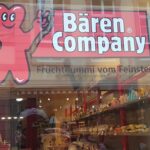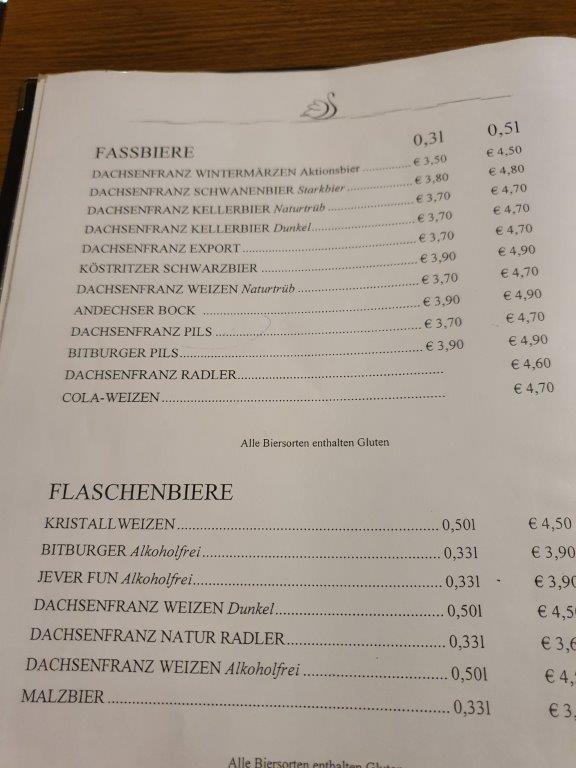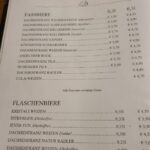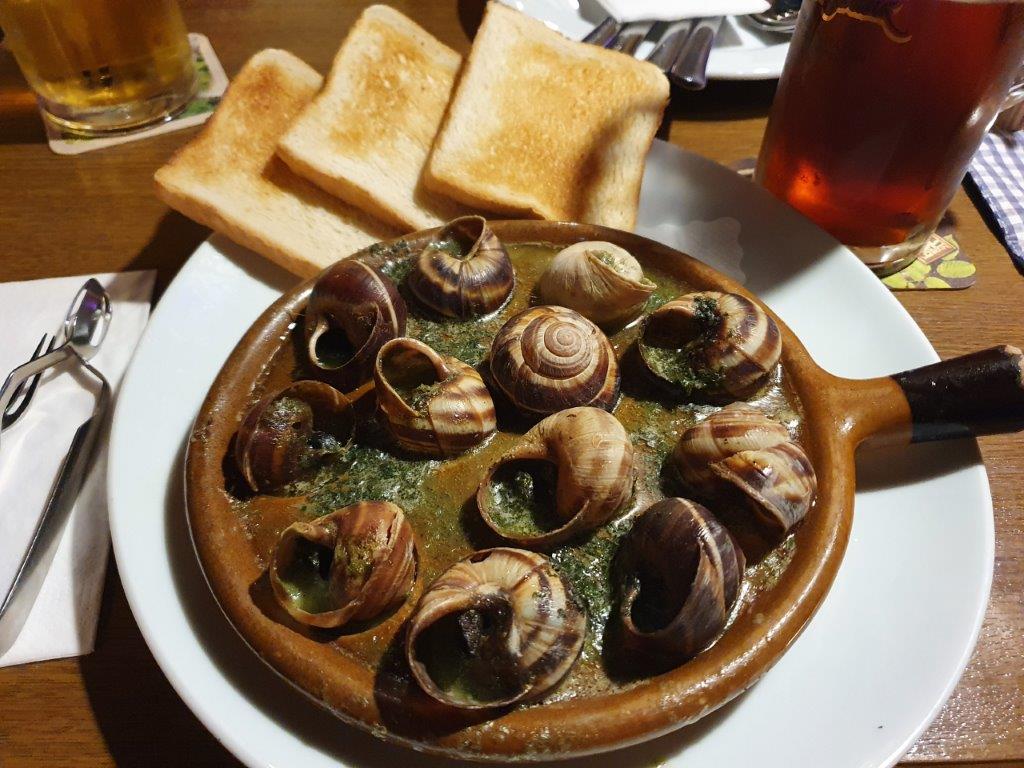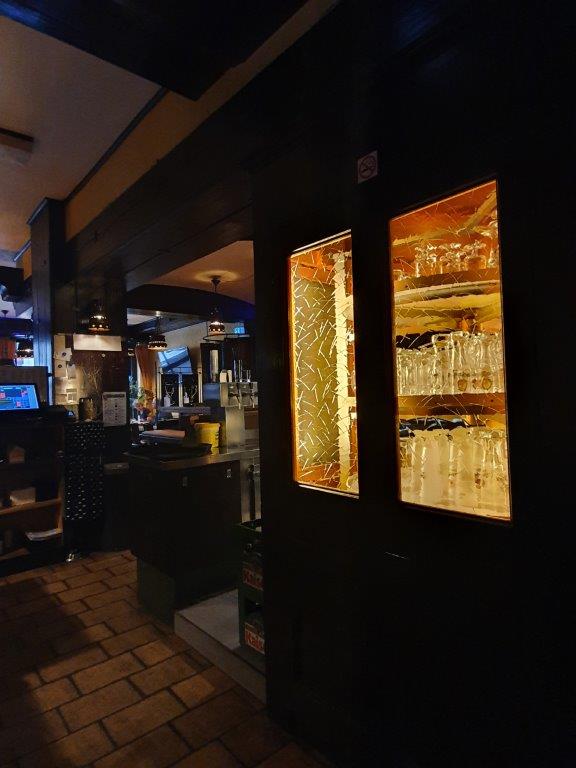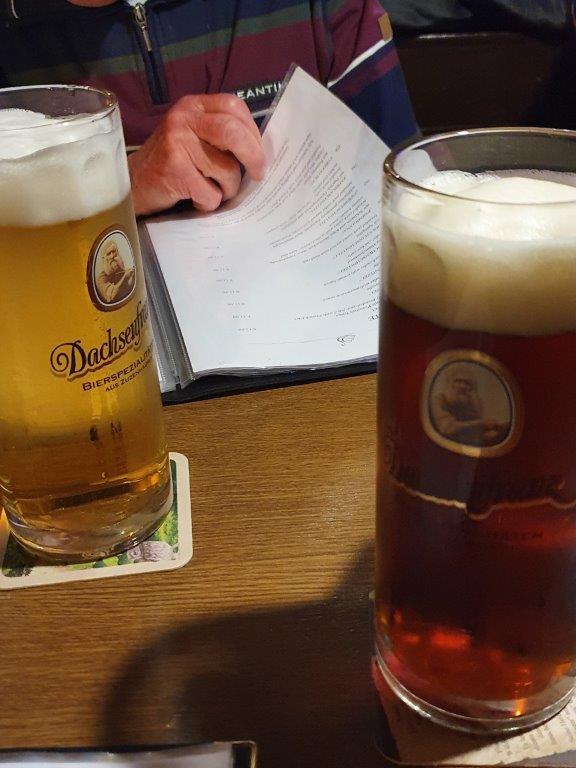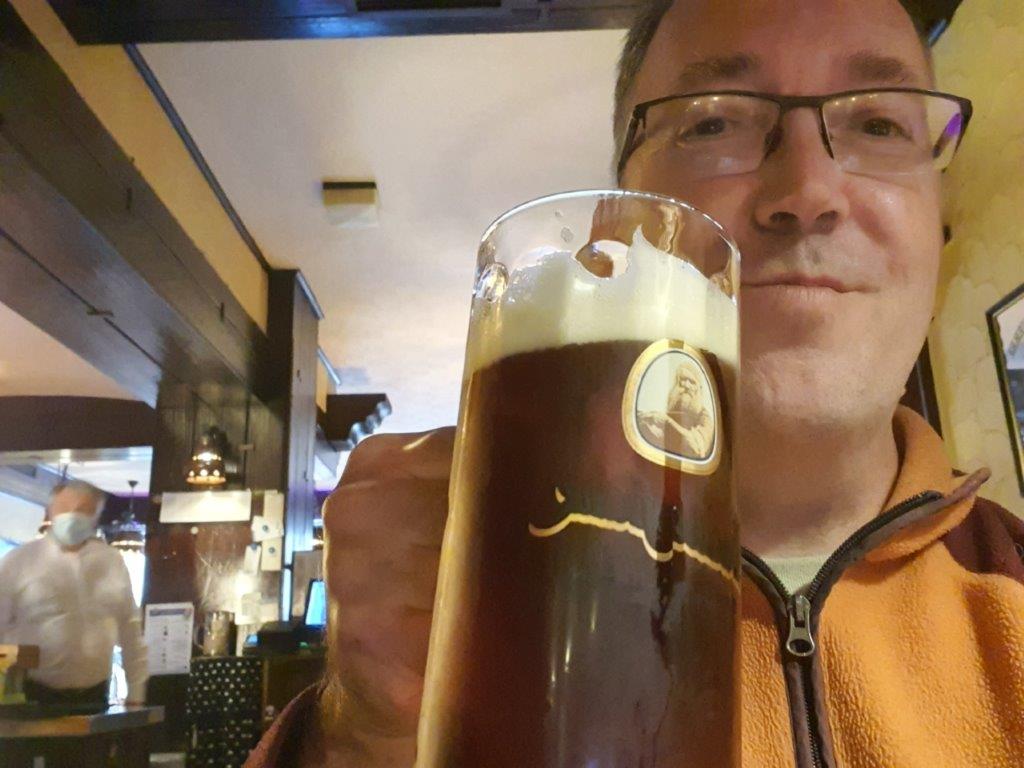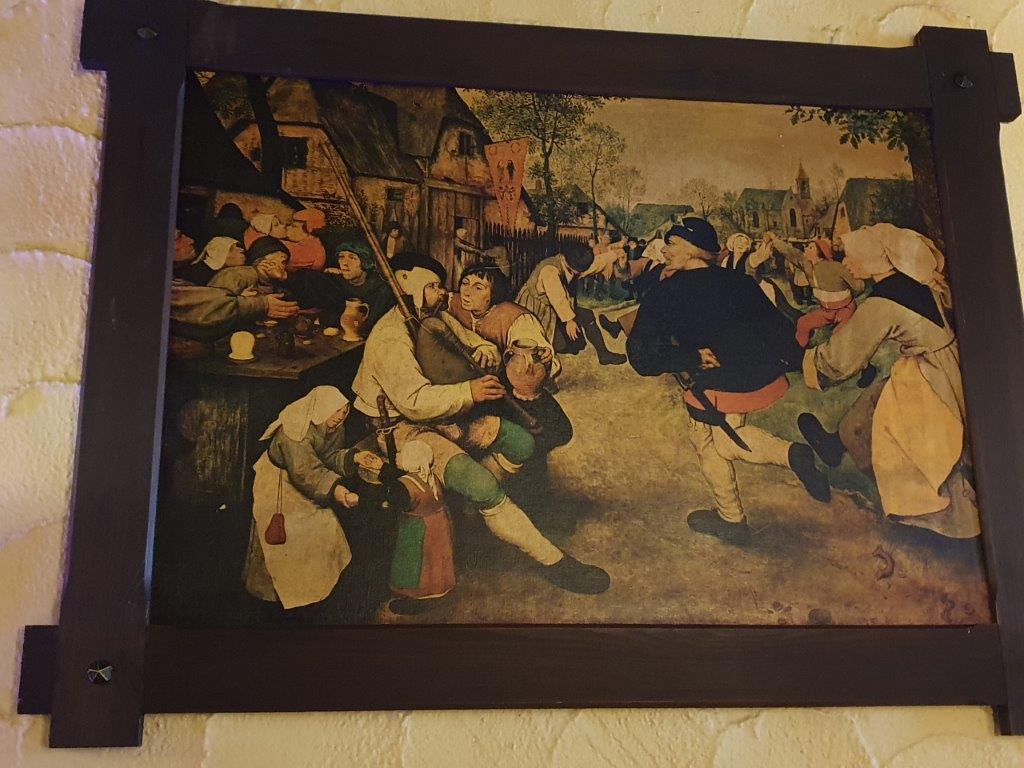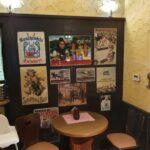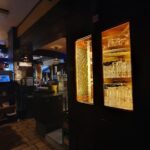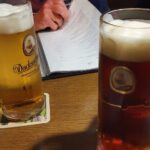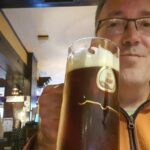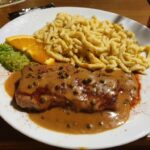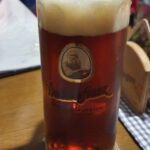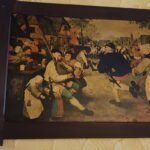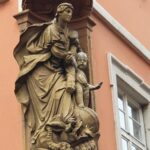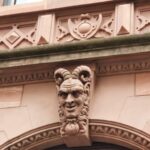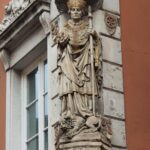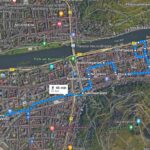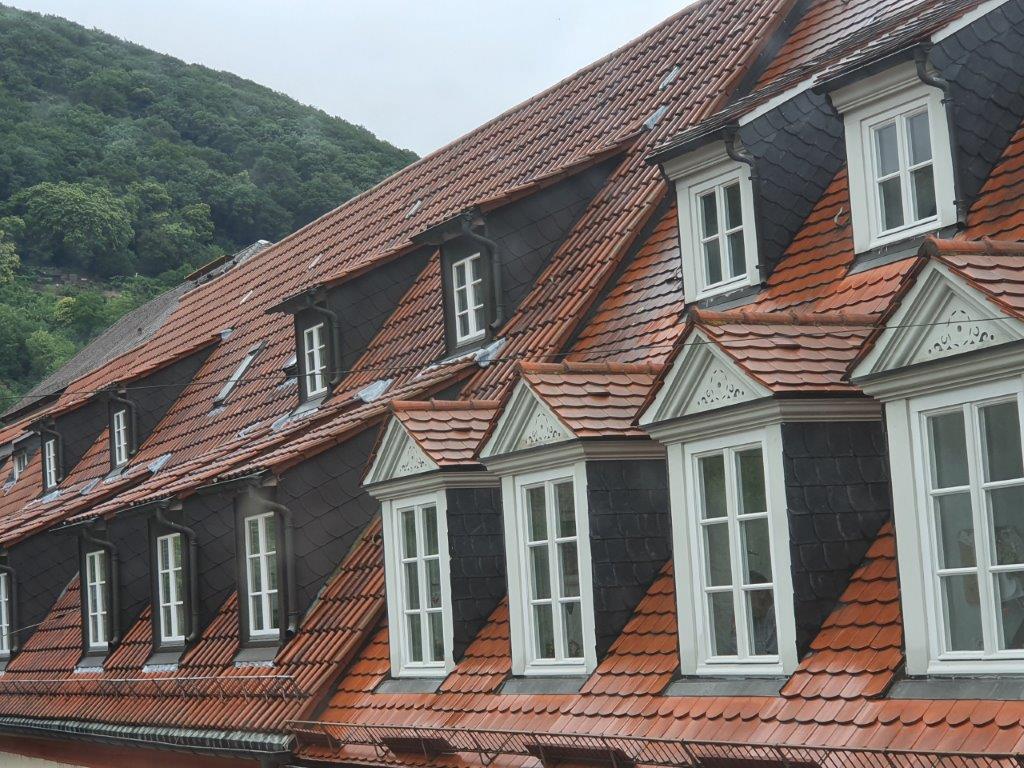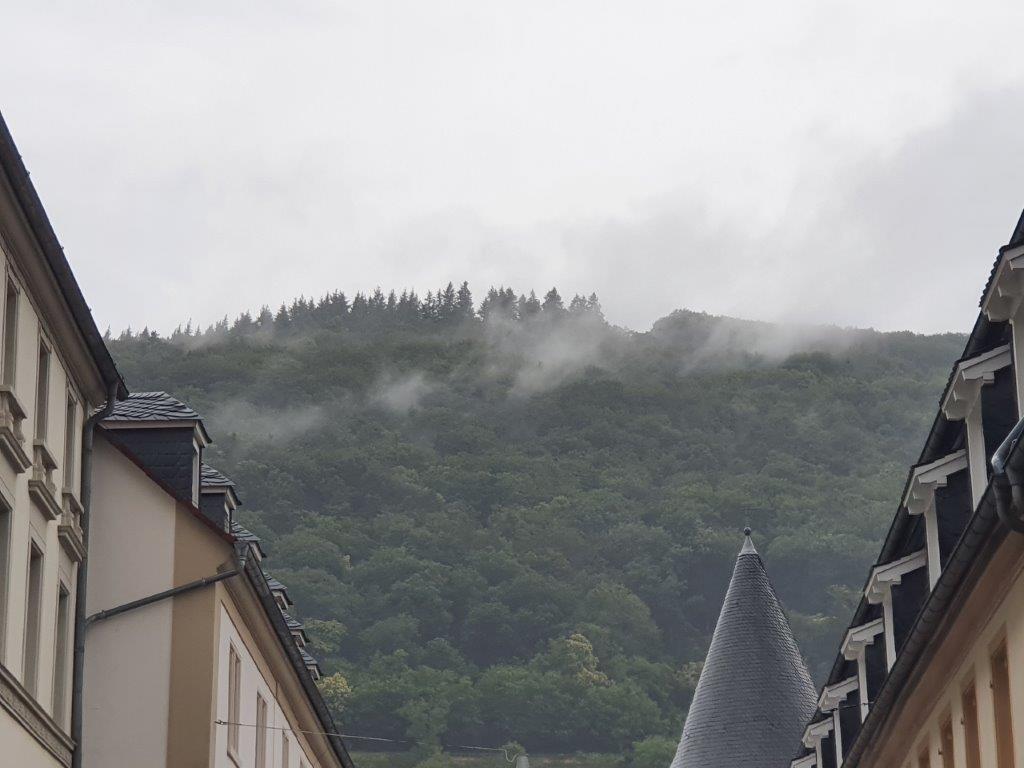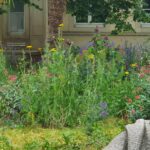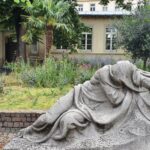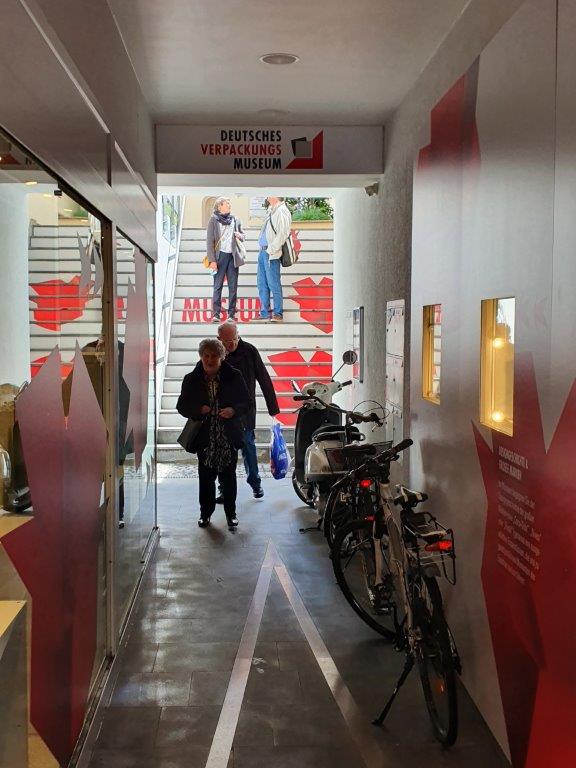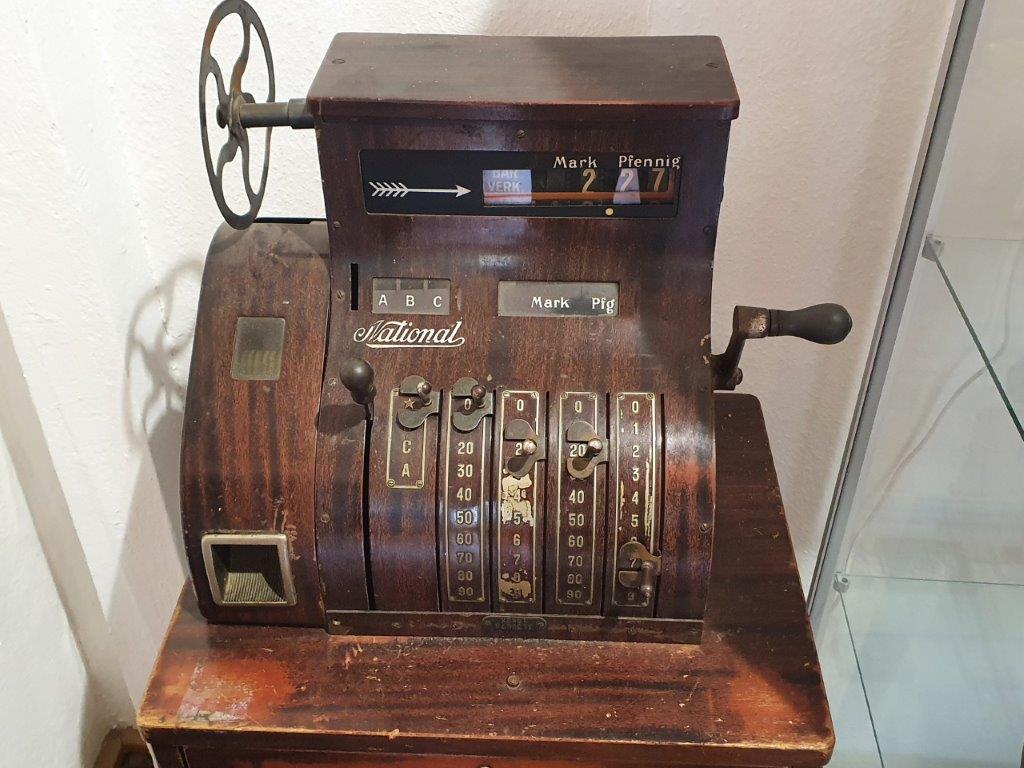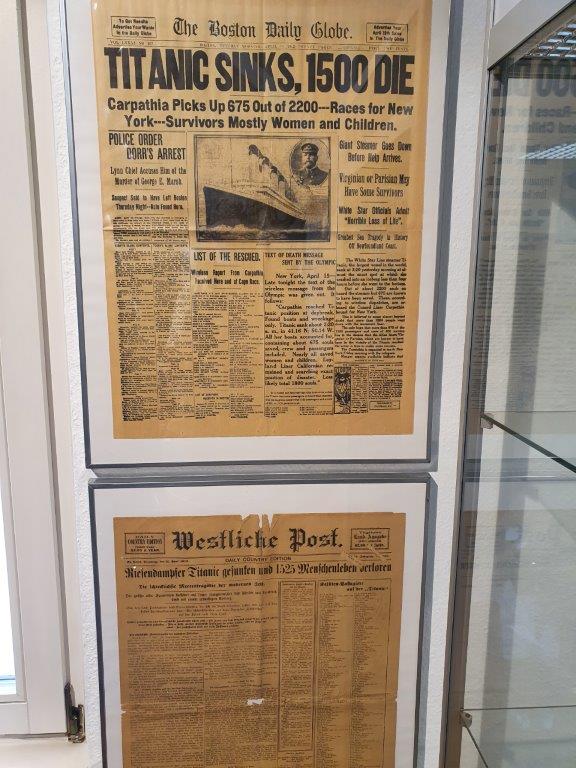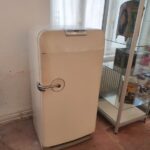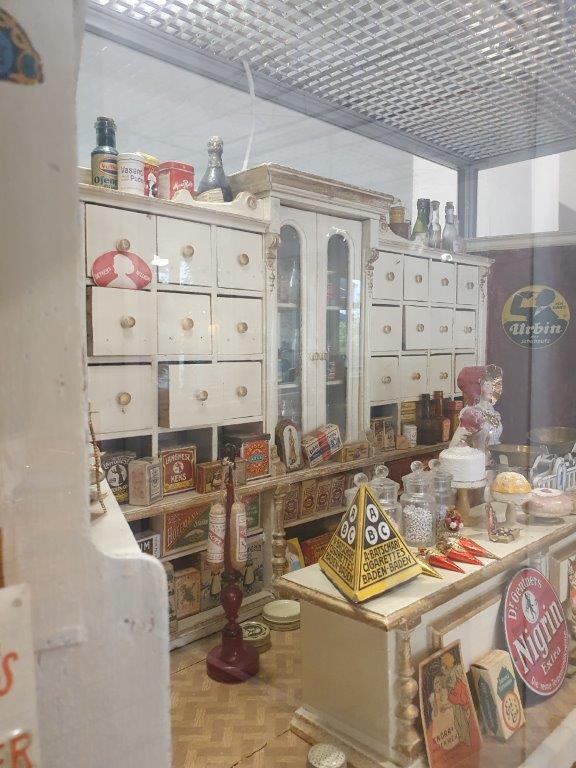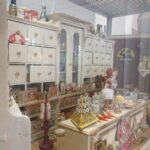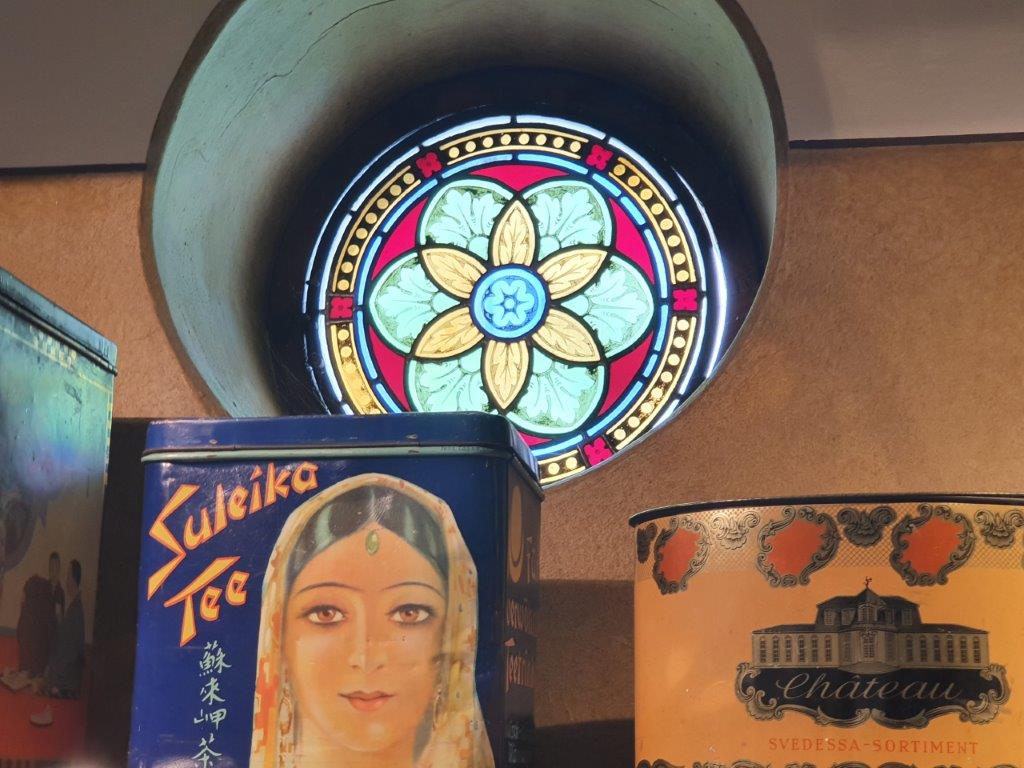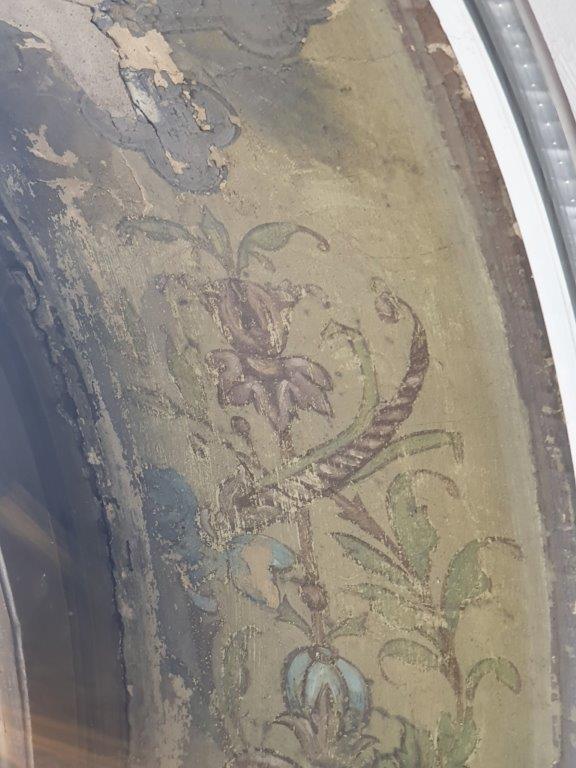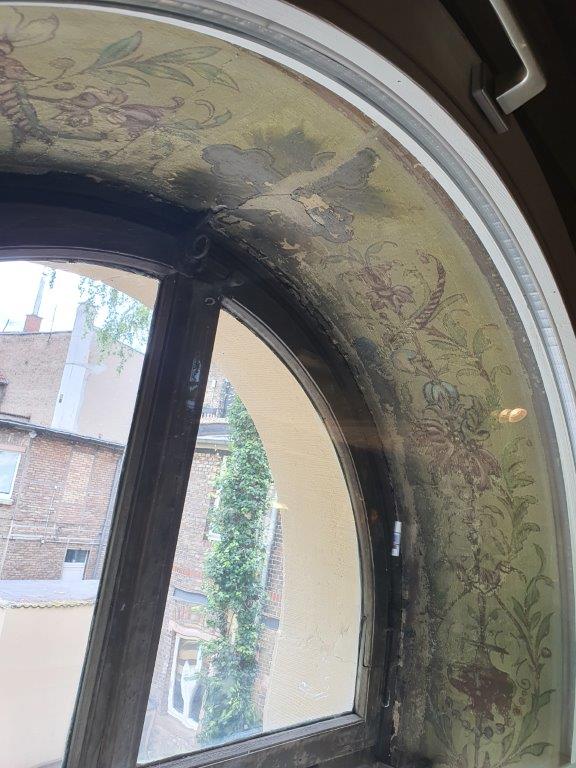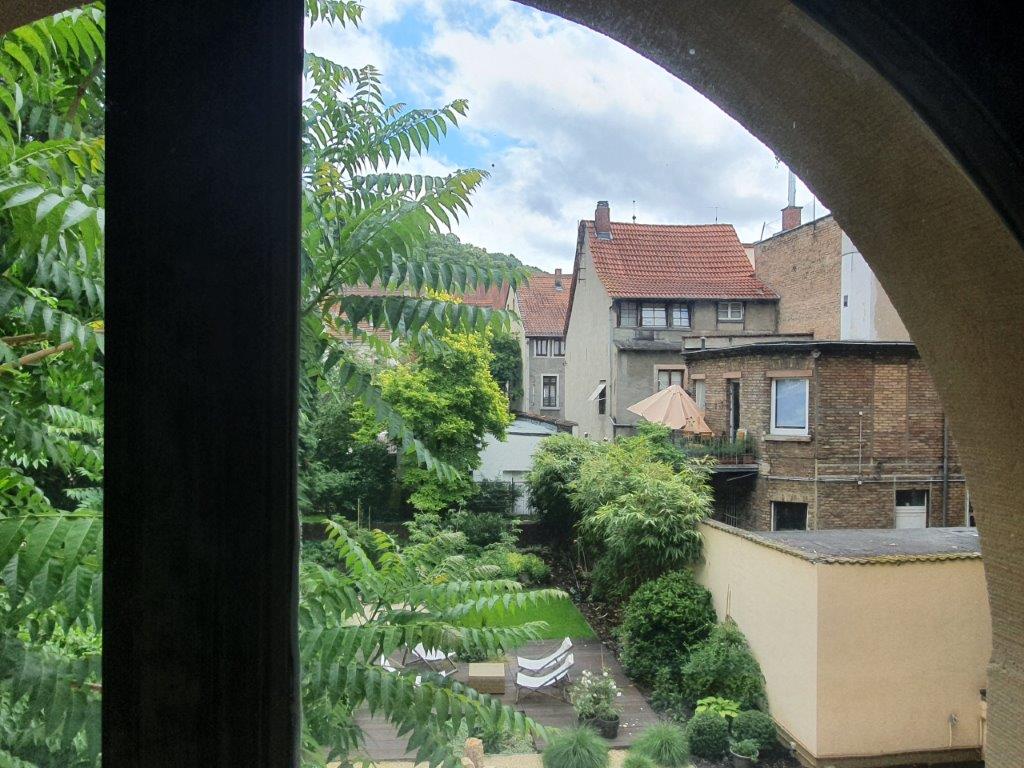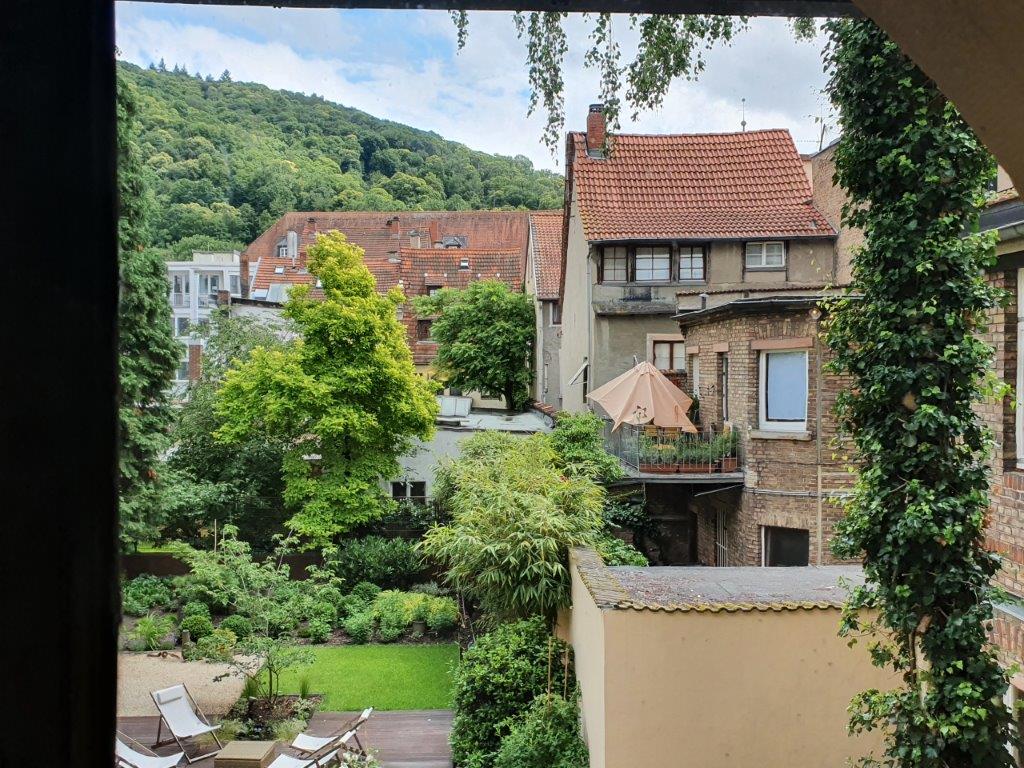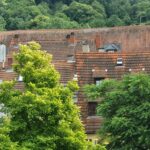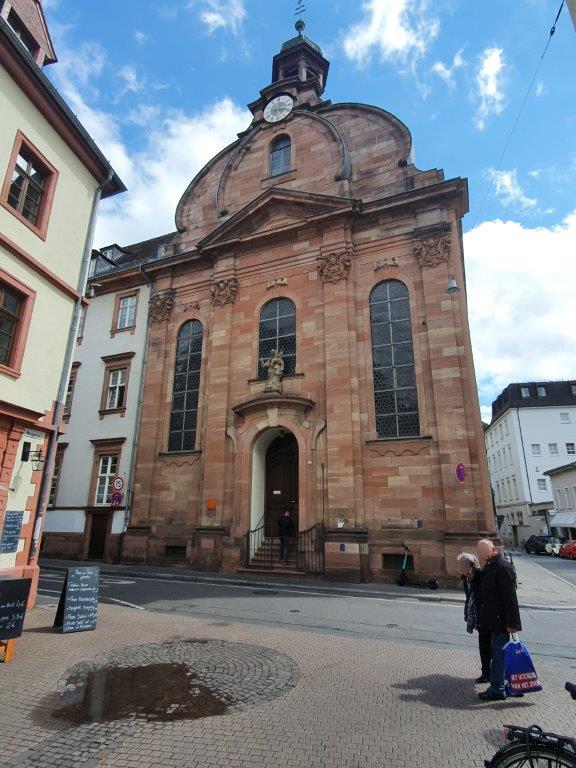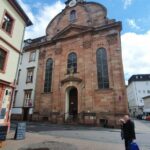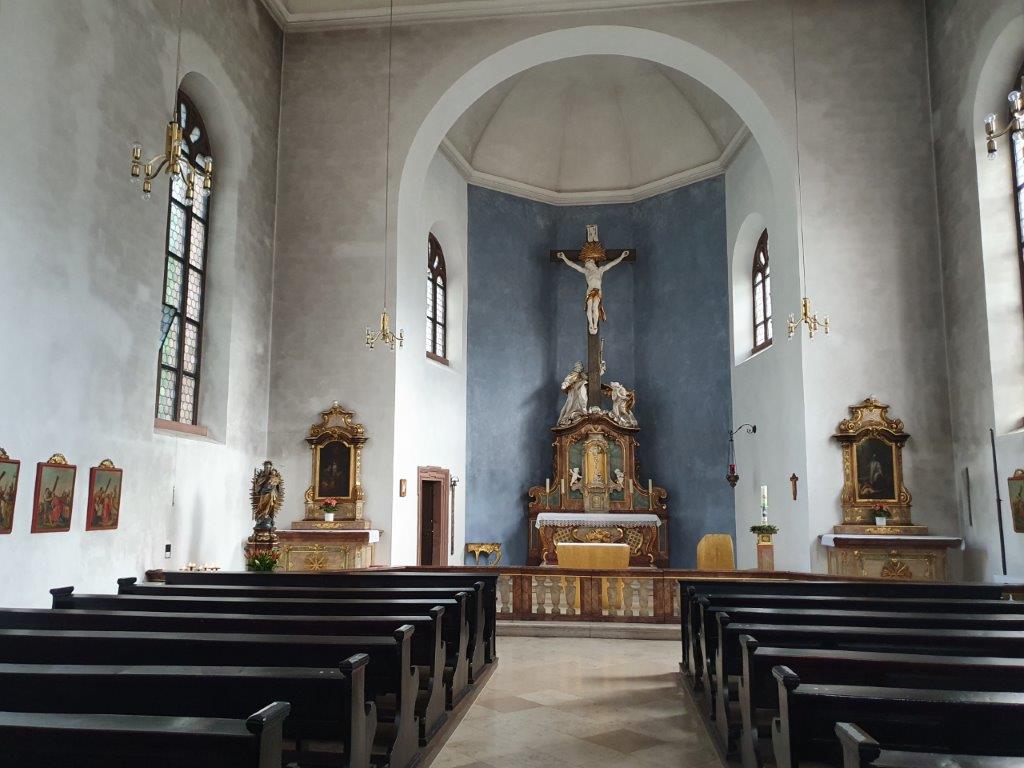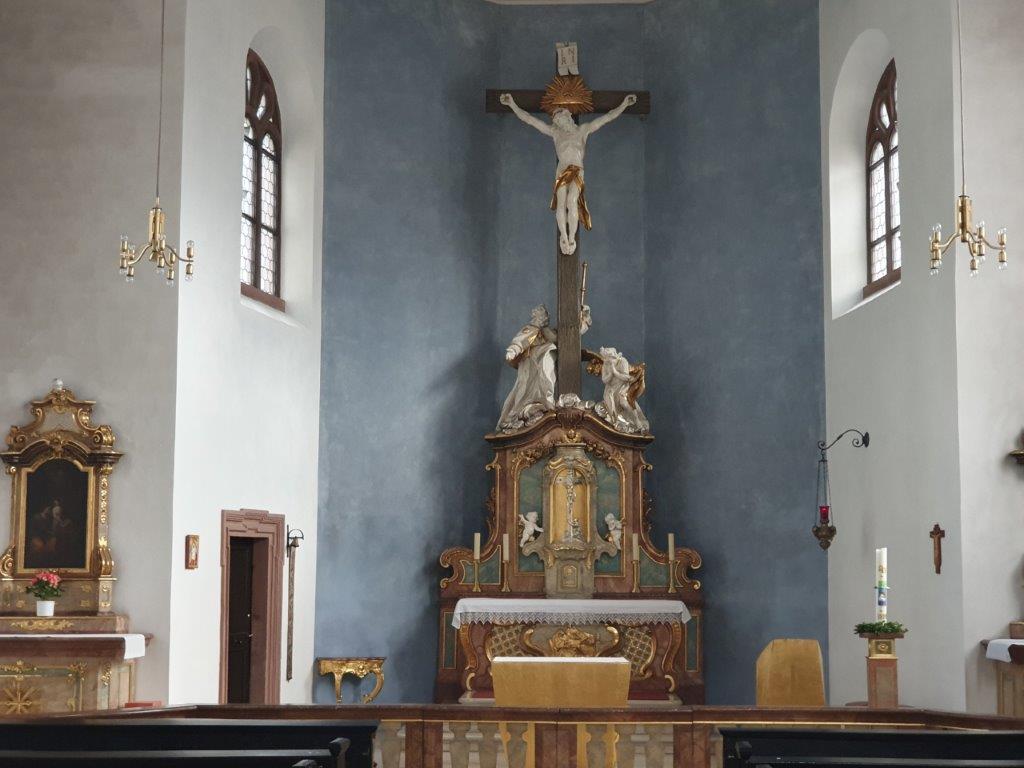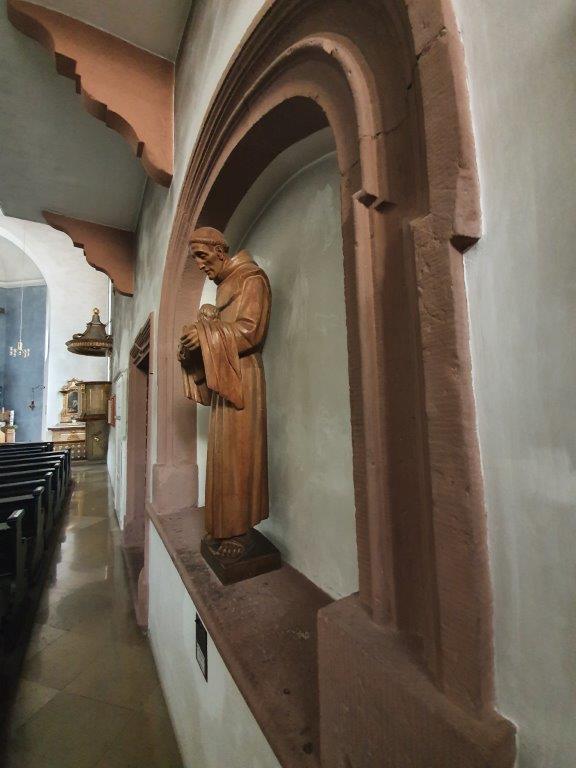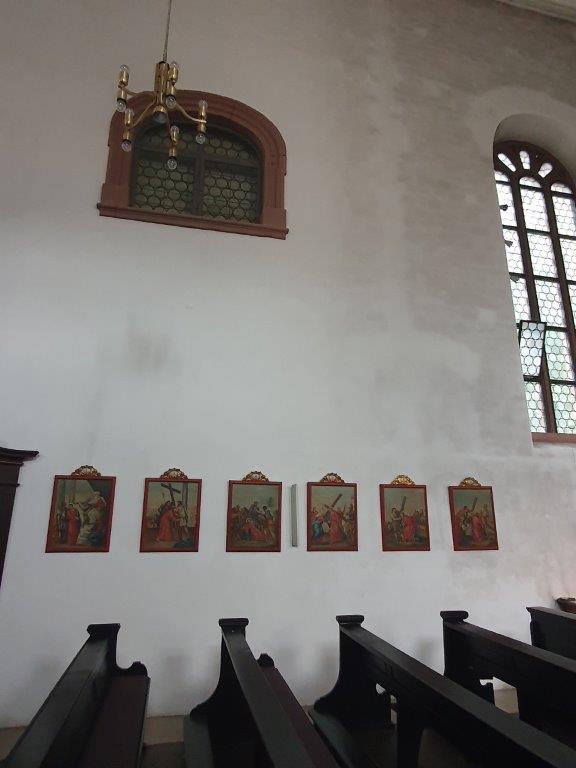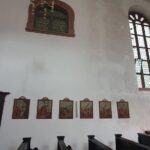A citywalk through Heidelberg’s Old Town (Die Altstadt) – Walk 2
The citywalk part 2:
I created this citywalk in two parts of which part 2 is described in this blogpost. This part deals with the walk through the Heidelberger Altstadt (Old Town) starting at Heidelberg Central Station. If you decided to do the combined walks 1+2, you can proceed at the 2nd Green icon on this blogpost, which is at the end of the 1st walk.
(The 2nd walk will start at the Old Bridge and end at the Central Station of Heidelberg, but alternatively it can be started from and ended at the Central Station too.) Here’s a link to
, which ends at The Brückenaffe statue next to the Old Bridge.
Start of the 2nd City Walk from the Heidelberg Central Station: Start in front of Heidelberg Central Station. Go a bit left and then walk straight ahead over the Willy Brandt Platz towards and then crossing the Lessingstraße.
Keep going straight ahead on the Kurfürsten-Anlage until it merges with a larger street which is also named Kurfürsten Anlage. It does get a bit confusing now but all you need to do is keep going straight ahead on this Kurfürsten Anlage, ignoring a street to the right which is named…sigh… Kurfürsten-Anlage.
Keep following this street straight ahead until you reach a large roundabout, left is the Ringstraße, straight ahead the … sigh…. Kurfürsten-Anlage and left the… sigh… Kurfürsten-Anlage. Go left.
The first part of the walk is a brisk walk towards the Neckar River. It is through modern Heidelberg also called Weststadt. It is not a very interesting part of Heidelberg in a historic context. That’s why I will not provide you with any indepth details regarding this walk until we’ve reached the River Neckar. Just keep walking 🙂
Again keep following the Kurfürsten-Anlage, ignore a road going left which is named… ah, well you by now know what it is called ? and another road left named Römerstraße. Instead keep following the road which curves to the right and then goes straight again. Pass a small public park to the left.
Go left where the road crosses the Rohrbacherstraße and subsequently changes into the Adenauerplatz. YOU FINALLY LEFT THE KURFÜRSTEN-ANLAGE!!!. Cross the Adenauerplatz.
Go left onto the Sofienstraße (again a street with a lot of traffic) and keep following it until you’ve reached the River Neckar at the Theodor Heuß Brücke.
Go right and follow the Neckarstaden. Keep the river Neckar to your left. Walk on the left side (riverside of the road).
Follow the river until you reach the statue of the Brückenaffe (Bridge Baboon/Monkey) just before the Old City Gate at the Old Bridge (Alte Brücke).
At the River Neckar
Enjoy the beautiful view over the river…
Go right into a much smaller street which is also named Neckarstaden, very near to the Alte Brücke.
Der Brückenaffe and The Old Bridge (The Alte Brücke)
More information at the end of:
If you walked the combined Heidelberg city walks 1+2, then this is the start of the city walk 2 after finishing walk 1. Here’s a link to
Descriptions of the Brückenaffe and of the Old Gate and the Old Bridge can be found in Walk 1.
![]() Start of the 2nd City Walk from the Brückenaffe statue: Walk from the Brückenaffe statue towards the Old city gate and the Old Bridge.
Start of the 2nd City Walk from the Brückenaffe statue: Walk from the Brückenaffe statue towards the Old city gate and the Old Bridge.
Old Town City Walk Map 1:
The old city gate
![]() Then go right into the old town, into the Steingasse.
Then go right into the old town, into the Steingasse.
Steingasse
![]() Follow the Steingasse to the Fischmarkt and turn right.
Follow the Steingasse to the Fischmarkt and turn right.
Fischmarkt
![]() Keep going straight ahead and follow the Untere Straße to the Heumarkt.
Keep going straight ahead and follow the Untere Straße to the Heumarkt.
Heumarkt
The Heumarkt (hay market)got its name from the hay trade there and even pigs used to be traded there, hundreds of years ago.
In a small triangle formed by the Heumarkt, a controversial and striking source of water was placed.
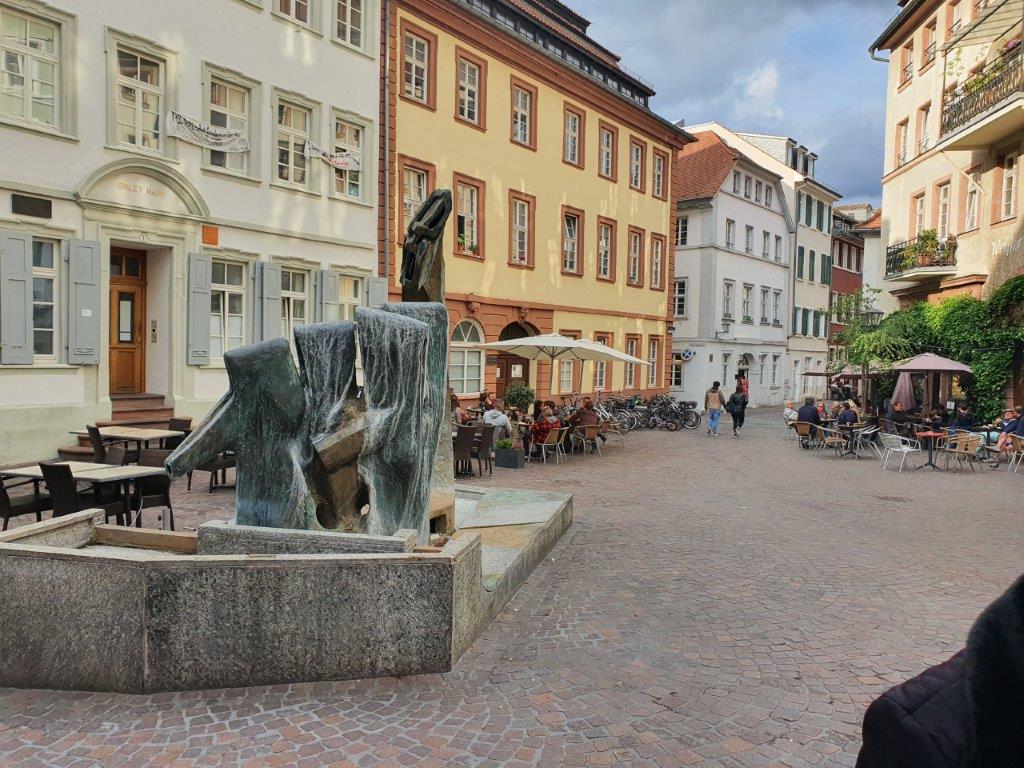
![]() At the end turn left. This street is also called Heumarkt and it ends at the Hauptstraße.
At the end turn left. This street is also called Heumarkt and it ends at the Hauptstraße.
![]() Turn left into the Hauptstraße and follow it until it reaches the Marktplatz.
Turn left into the Hauptstraße and follow it until it reaches the Marktplatz.
Hotel Zum Ritter St. Georg
Where the Fishmarket meets the Hauptstraße ist Hotel Zum Ritter St. Georg. The Hotel Zum Ritter St. Georg lies in the middle of the Old Town of Heidelberg in a beautiful building from the Renaissance (1592).
Next enter the:
Church of the Holy Spirit
The Church of the Holy Spirit (German: Heiliggeistkirche) is the largest church in Heidelberg, Germany. The church, located in the marketplace in the old town center, was constructed between 1398 and 1515 in the Romanesque and Gothic styles. It receives 1–3 million guests annually, making it among the most visited churches in Germany. Enter its entrance to visit the beautiful interior…
The church was planned as the burial place of the Electors of the Palatinate and as a representative church of the Palatinate royal seat. In the Palatine War of Succession, the princely graves of the Electors were destroyed; today only the grave of the founder of the church, Elector Ruprecht III, remains. The church was also the location of the founding of the Heidelberg University and was the original repository of the Bibliotheca Palatina.
 The congregation was originally Roman Catholic, but the church has changed denominations more than ten times through its history. Intermittently, over a 300 year period, the nave and the choir of the church were separated by a wall, allowing both Catholics and Protestants to practice in the church at the same time. The wall was ultimately removed in 1936, and the congregation is now solely Protestant. Today, it is a parish church within the Evangelical Church of Heidelberg and is part of the Evangelical Church in Germany.
The congregation was originally Roman Catholic, but the church has changed denominations more than ten times through its history. Intermittently, over a 300 year period, the nave and the choir of the church were separated by a wall, allowing both Catholics and Protestants to practice in the church at the same time. The wall was ultimately removed in 1936, and the congregation is now solely Protestant. Today, it is a parish church within the Evangelical Church of Heidelberg and is part of the Evangelical Church in Germany.
The Bibliotheca Palatina was founded and originally kept in the gallery of the Church of the Holy Spirit, where good light for reading was available. It contained several collections, including the libraries of Heidelberg University, Heidelberg Castle, and several monasteries.
During the Thirty Years War, this collection of manuscripts and early printed books were taken as loot and presented to the Pope by the Count of Tilly, who commanded the Catholic League’s forces at Heidelberg in 1622. Reportedly 54 oxcarts filled with crates of books were taken to Rome from the Church of the Holy Spirit. They now form the Bibliotheca Palatina section of the Vatican Library. As a result of the Congress of Vienna, 847 of the german manuscripts from this collection were returned to the University of Heidelberg in 1816. For the University’s 600th anniversary, a further collection of 588 of the Bibliotheca’s documents were temporarily exhibited at the Church. Much of the exhibition contained documents detailing the workings of the former library itself: from the former library’s binding techniques to records on the library’s removal in 1623.
![]() Leave the Hauptstraße towards the Heidelberg Castle (which is high above you) corner.
Leave the Hauptstraße towards the Heidelberg Castle (which is high above you) corner.
Marktplatz
At the center of the Marktplatz is a statue:
![]() Next turn into the Hauptstraße (Main street) and then stay left when you pass the Kornmarkt (Corn Market).
Next turn into the Hauptstraße (Main street) and then stay left when you pass the Kornmarkt (Corn Market).
![]() Walk straight ahead over the Hauptstraße until you reach the Karlsplatz.
Walk straight ahead over the Hauptstraße until you reach the Karlsplatz.
Karlsplatz
On the Karlsplatz is a fountain statue and on on the castle side of the Karlsplatz is the Academy of Science.
The fountain commemorates the humanist and cosmographer Sebastian Münster (1488-1552), who worked as a teacher of Hebrew and researcher of astronomy and mathematics in the Franciscan monastery located here from 1521 to 1529. Here he began his famous cosmography, to which the fountain refers.
 From the Karlsplatz you will also have a great view towards the Heidelberg Castle.
From the Karlsplatz you will also have a great view towards the Heidelberg Castle.
![]() Now return to the Kornmarkt via the Hauptstraße.
Now return to the Kornmarkt via the Hauptstraße.
Kornmarkt
From the Kornmarkt the view towards Heidelberg Castle is really good too.

![]() Cross the Kornmarkt towards the Heidelberg Castle (which is high above you) corner.
Cross the Kornmarkt towards the Heidelberg Castle (which is high above you) corner.
![]() Next walk towards the castle and via the Burgweg. You can now choose to either walk up to the castle or take the Bergbahnen Heidelberg.
Next walk towards the castle and via the Burgweg. You can now choose to either walk up to the castle or take the Bergbahnen Heidelberg.
The castle is absolutely worth visiting but it is not included in this city walk which focusses on the old town center. When The Wandelgek visited Heidelberg he was there with his parents and brother. His parents were not able to climb towards the castle and the Bergbahnen was out of order.
![]() Where the Burgweg starts to ascend, turn right into the Zwingerstraße and go left into the Bremeneckgasse.
Where the Burgweg starts to ascend, turn right into the Zwingerstraße and go left into the Bremeneckgasse.
Views from the Bremeneckgasse and Neue Schlossstraße
Where the Neue Schlossstraße joins the Bremeneckergasse, is a kind of weird building which breaths medieval as well as more modern times.
Another beautiful building in this area is at the Neue Schlossstraße number 4. It is the Guestphaliakorpskneipe.
Very near is also a view upwards on this beautiful building…
![]() Next return to the Zwingerstraße. Keep following this street until its end and then turn left into the Kettengasse.
Next return to the Zwingerstraße. Keep following this street until its end and then turn left into the Kettengasse.
The view below is into the Kettengasse, but to the right. Do not enter it in that direction. High above is the tower of the Church of the Holy Spirit.

 University of Heidelberg
University of Heidelberg
Go right into the Seminarstraße![]() .
.
You now enter the grounds of the University of Heidelberg. Heidelberg University, officially the Ruprecht Karl University of Heidelberg, (German: Ruprecht-Karls-Universität Heidelberg) is a public research university in Heidelberg, Baden-Württemberg, Germany. Founded in 1386 on instruction of Pope Urban VI, Heidelberg is Germany’s oldest university and one of the world’s oldest surviving universities. It was the third university established in the Holy Roman Empire.
Ate the Seminargasse number 2 is the Carolinum
![]() Go right into the Schulgasse.
Go right into the Schulgasse.
On the right side of the road is the Roman Seminar of the University of Heidelberg and…
 …on the left side of the road is the Philosphisches Seminar of the University of Heidelberg.
…on the left side of the road is the Philosphisches Seminar of the University of Heidelberg.
After the Philosphisches Seminar is the Jesuitenkirche.
Follow the Schulgasse until you reach the Richard-Hauser-Platz to your right. ![]()
Jesuitenkirche
The Jesuit Church (official name: Parish Church of the Holy Spirit and St. Ignatius) is the largest and most important church in Heidelberg next to the Church of the Holy Spirit and forms the architectural focus of the former Jesuit quarter in the old town in the immediate vicinity of the University Square. Today it is the main church of the Roman Catholic Holy Spirit congregation in Heidelberg’s old town. The church was built in the baroque style from 1712 to 1759, the neo-baroque tower was only added in the years 1868 to 1872. The church, which does not face east as usual but faces south, is a “building that is as remarkable as it is unusual”. Beneath is the facade of the Jesuit Church…
Attached to the church is the Museum of Sacred Art and Liturgy with a treasury. Among other things, figures of saints, chalices and monstrances as well as chasubles from past centuries are exhibited there.
From the Richard-Hauser-Platz, you can enter the Jesuitenkirche
 The Jesuit Church, built in the baroque style, is a three-aisled pillared hall, with the hall church type being a comparatively old-fashioned building type at the time the church was built.
The Jesuit Church, built in the baroque style, is a three-aisled pillared hall, with the hall church type being a comparatively old-fashioned building type at the time the church was built.
![]() Leave the Richard-Hauser-Platz on the opposite direction through the Merianstraße. Follow it until it ends and turn right into the Kettengasse.
Leave the Richard-Hauser-Platz on the opposite direction through the Merianstraße. Follow it until it ends and turn right into the Kettengasse.
![]() Turn left into the Ingrimstraße.
Turn left into the Ingrimstraße.
![]() Turn left where the Ingrimstraße crosses the Krämergasse and follow it until you retun to the Church of the Holy Spirit (German: Heiliggeistkirche). Now turn left into the Hauptstraße (Main Street).
Turn left where the Ingrimstraße crosses the Krämergasse and follow it until you retun to the Church of the Holy Spirit (German: Heiliggeistkirche). Now turn left into the Hauptstraße (Main Street).
The Hauptstraße
The Hauptstraße is the main shopping area street of the old town, but it has much more to offer than shops only and even some shops are quite funny or weird…
There are souvenir shops in the pedestrian areas of Heidelberg, like in the Hauptstraße or in the area between the Marktplatz and the Alte Brucke.
I also saw this shop with a shopping window full of rather weird items to buy…
Another shop was selling gummi bears in all sorts of products, like Beerglasses filled with gummi bears with beer taste and a football stadium built with gummi bears…
From the Hauptstraße you’ll have views towards the garden area of the Heidelberg Castle, which is above the arched wall on the hill…
 A good place for dinner and beer is the Weisser Schwan Biermuseum/Zum Weißen Schwan….
A good place for dinner and beer is the Weisser Schwan Biermuseum/Zum Weißen Schwan….
The Wandelgek was celebrating his birthday with his parents and his brother here…
 Above is a part of the history of the Weisser Schwan Biermuseum. It is in German only.
Above is a part of the history of the Weisser Schwan Biermuseum. It is in German only.
They had several German draught beers and a sturdy meals on the menu. Clearly a Burgundy style restaurant.
While strolling through the Hauptstraße, don’t forget to look up…
![]() Keep following the Hauptstraße until you see the Marstallstraße to your right. Turn right and follow it until it makes a slight turn right and then left again.
Keep following the Hauptstraße until you see the Marstallstraße to your right. Turn right and follow it until it makes a slight turn right and then left again.
Old Town City Walk Map 2:
Heidelberger Marstall
To your left is the Heidelberger Marstall, built of Neckar valley sandstone. It is one of the oldest surviving buildings from the early modern period in Heidelberg.
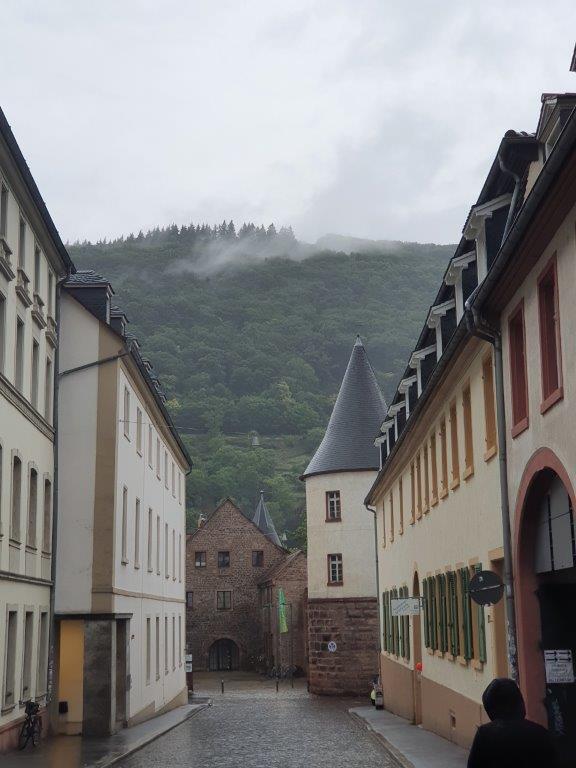
Language: Meaning of the word Marstall
In Germany and Austria the term Marstall (originally: mare or horse stable) is used for a coach house with surrounding buildings for all the horses and carriages of a palace. The Royal Stables in The Hague and those at Paleis het Loo in Apeldoorn fall under this German concept. In the English language Marstall can be roughly translated as mews, but these terms do not completely cover each other. The Royal Mews at Buckingham Palace in London would also have been called Marstall in the German language area. The French term haras also includes some such building complexes, but actually means a large stud farm. The Grande Écurie at Versailles can be called the Marstall of the kings of France. The Hovstallet in the Swedish capital of Stockholm was originally a similar equestrian complex; today it also houses the fleet of royal cars.
A Marstall can be a very large complex of buildings. It includes, in addition to an equestrian center, horse stables and storage areas for saddles, horse harness and fittings, often a riding arena and dressage grounds, a farrier’s workshop, and staff quarters. The staff of a Marstall is led by an imperial or royal (supreme) equerry. There are also sometimes the training facilities of a (royal) court riding school, such as the Spanish Riding School in Vienna.
Most of the existing Marställe are in the German-speaking area and date from the 17th, 18th or 19th century. Many of these representative building complexes were built in the late Renaissance, Baroque or Classical style. Marstall buildings are almost always located in the immediate vicinity of a palace or are part of it.
![]() Keep following the Marstallstraße until it reaches the Neckarstaden and turn left (the Neckar river is to your right now and the walls of the Heidelberger Marstall to your left). Keep following that wall until it ends (there are turrets on all corners of the Marstall). Now turn left again and enter the Schiffgasse.
Keep following the Marstallstraße until it reaches the Neckarstaden and turn left (the Neckar river is to your right now and the walls of the Heidelberger Marstall to your left). Keep following that wall until it ends (there are turrets on all corners of the Marstall). Now turn left again and enter the Schiffgasse.
History
The Marstall with its 135 meter long building front along the Neckar is one of the few buildings that were built at the transition from the late Middle Ages to the early modern period and have survived the turmoil of war over the centuries in the old town of Heidelberg unscathed to this day.
The building complex was probably built under Elector Ludwig V around 1510 as an armory and artillery foundry, as a precaution in the event of war, directly on the Neckar. Only a few years earlier, in 1504, Heidelberg had been besieged in the so-called Landshut War of Succession, which may have been the reason for the construction of the military building in the immediate vicinity of the city wall. Herbert Derwein assumes the Palatinate builder and gunsmith Lorenz Lechler to be the responsible architect.
At both boundaries of the building complex, along its Neckar front, there is a watchtower with loopholes for handguns.
The name Marstall, which was later given to the building, goes back to a Renaissance building along the south side of the inner courtyard, which was destroyed in 1693 during the Palatinate War of Succession and was built under Count Palatine Johann Casimir in 1590.
Building and organization
The princely stables included the buildings for horses, carriages, carriages and harness. Depending on the size of the estate, royal stables can take on considerable dimensions and form their own building complex. Especially in the Baroque period, the stable buildings were magnificently executed. A covered riding arena (referred to as a riding house at the time) for the court riding school was often attached to the stables.
The royal stables were usually headed by a high-ranking aristocratic official of the court. In the hierarchy of the court offices he was usually arranged between rank 4 and 8. Often this task was a representative activity; the actual daily work was incumbent on non-noble leaders. The designation of the position varies: “Marstaller” (Württemberg), “Oberstallmeister”, “Oberststallmeister” or “Großstallmeister” were common.
![]() Keep following the Schiffgasse until it reaches the end and turn left into the Hauptstraße. Keep following the Hauptstraße and turn right into the Grabengasse. A bit further to the left you’ll reach the Universitätsplatz. However keep following the Grabengasse until it bends to the left and turn right into the Plöck.
Keep following the Schiffgasse until it reaches the end and turn left into the Hauptstraße. Keep following the Hauptstraße and turn right into the Grabengasse. A bit further to the left you’ll reach the Universitätsplatz. However keep following the Grabengasse until it bends to the left and turn right into the Plöck.
University Library Main Building
To your left is the University Church (Saint Peter’s Church) and to your right is the beautiful main building of the old University Library. A real eyecatcher…
 The University Library Heidelberg (German: Universitätsbibliothek Heidelberg) is the central library of the University of Heidelberg. It constitutes together with the 83 decentralized libraries of the faculties and institutes the University Library System, which is headed by the director of the University Library. The University Library holds special collections in literature concerning the Palatinate and Baden, egyptology, archeology, the history of art, and South Asia. It holds about 3.2 million books, 10,732 scientific periodicals, and about 500,000 other media such as microfilms and video tapes. It holds 6,600 manuscripts (most notably the Codex Manesse), 1,800 incunabula, 110,500 autographs, and a collection of old maps, paintings, and photographs. The libraries of the faculties and institutes hold another 3.5 million printed books. In 2005, 34,500 active users of the University Library accessed 1.4 million books a year. The conventional book supply is complemented by numerous electronic services, such as 3,000 commercial scientific journals that can be accessed via e-journal.
The University Library Heidelberg (German: Universitätsbibliothek Heidelberg) is the central library of the University of Heidelberg. It constitutes together with the 83 decentralized libraries of the faculties and institutes the University Library System, which is headed by the director of the University Library. The University Library holds special collections in literature concerning the Palatinate and Baden, egyptology, archeology, the history of art, and South Asia. It holds about 3.2 million books, 10,732 scientific periodicals, and about 500,000 other media such as microfilms and video tapes. It holds 6,600 manuscripts (most notably the Codex Manesse), 1,800 incunabula, 110,500 autographs, and a collection of old maps, paintings, and photographs. The libraries of the faculties and institutes hold another 3.5 million printed books. In 2005, 34,500 active users of the University Library accessed 1.4 million books a year. The conventional book supply is complemented by numerous electronic services, such as 3,000 commercial scientific journals that can be accessed via e-journal.
History
The University Library of today traces its roots back to the purchase of a chest of documents by the first Rector Marsilius von Inghen in 1388, which was stored in the Heiliggeistkirche, then the University Cathedral. Additional foundations of the library were laid through donations from bishops, chancellors, and early professors. Louis III willed his large and valuable collection to the university, as did also the Fugger of Augsburg. Otto Henry, Elector Palatine, combined the university’s libraries in the 16th century, thus creating the Bibliotheca Palatina. In the 17th century, the greatest part of the Bibliotheca Palatina was donated to the Vatican in Rome as a loot of the Thirty Years War. Several manuscripts from the 10th to 18th century from the libraries of the secularized monasteries Salem and Petershausen later constituted the basis for the reconstruction. From 1901 to 1905, a richly ornamented four-wing red sandstone building was constructed for the library across from the Church of St. Peter. It was designed by Josef Durm, who adapted the Renaissance style of Heidelberg Castle and added numerous elements of Art Nouveau. The building was expanded several times, lately by enlarged basements under the courtyard of the neighboring New University. The frontage is punctuated with many windows for the sake of natural illumination. The University Library’s stocks exceeded one million in 1934. Since 1978, the science branch of the University Library serves the institutes of natural sciences and medicine on the New Campus.
![]() Keep following the Plöck for quite a long stretch now until you see at your right a backpacker outdoor shop and a just past that a little square/garden park. This is the Märzgarten. Keep following the Plöck until you reach the end of the Märzgarten and turn right into the Märzgasse. Follow the Märzgasse until its end where the road changes name and crosses the Hauptstraße. Turn left into the Hauptstraße. Keep following the Hauptstraße.
Keep following the Plöck for quite a long stretch now until you see at your right a backpacker outdoor shop and a just past that a little square/garden park. This is the Märzgarten. Keep following the Plöck until you reach the end of the Märzgarten and turn right into the Märzgasse. Follow the Märzgasse until its end where the road changes name and crosses the Hauptstraße. Turn left into the Hauptstraße. Keep following the Hauptstraße.
 After a short stroll you’ll see the Haus zum Riesen to your left and the Anatomiegarten to your right.
After a short stroll you’ll see the Haus zum Riesen to your left and the Anatomiegarten to your right.
Anatomiegarten/ Anatomic Garden
There are five places along the way. While the marketplace was already laid out with this function in mind, the anatomy garden, university square, Kornmarkt and Karlsplatz came into being later through the demolition of buildings.
 The Anatomiegarten is also owned and used by the University of Heidelberg. Its buildings are quite spread aal over the old town.
The Anatomiegarten is also owned and used by the University of Heidelberg. Its buildings are quite spread aal over the old town.
There are two statues in the Anatomiegarten. Next to a small spot of green is what seems to be a male covered underneath a vale…
Right in the Anatomic Garden’s center is the:
Statue of Robert Wilhelm Bunsen
Robert Wilhelm Eberhard Bunsen (March 30, 1811 in Göttingen – August 16, 1899 in Heidelberg) was a German chemist. Together with Gustav Robert Kirchhoff, he discovered cesium and rubidium in 1861 and, together with Kirchhoff, also developed spectral analysis, with the help of which chemical elements can be detected in a highly specific manner. He perfected the Bunsen burner, which was named after him, and invented the Bunsen element and the Bunsen photometer.
 He perfected the Bunsen burner, which was named after him, and invented the Bunsen element and the Bunsen photometer.
He perfected the Bunsen burner, which was named after him, and invented the Bunsen element and the Bunsen photometer.
![]() Keep following the Hauptstraße until you reach a narrow roofed corridor on your left. It not that easy to find, but for this sign of the Deutsches Verpackungs Museum Marke + Design (German Packaging Museum, Branding + Design).
Keep following the Hauptstraße until you reach a narrow roofed corridor on your left. It not that easy to find, but for this sign of the Deutsches Verpackungs Museum Marke + Design (German Packaging Museum, Branding + Design).
The Wandelgek visited this museum as part of the city walk and it is really a cool museum in a beautiful old building which is quite hidden from the streets.
 There were old cigarette and chocolate dispenser machines, an retro cash register, an ancient fridge and newspapers from the past, like the one beneath, announcing that the Titanic sank.
There were old cigarette and chocolate dispenser machines, an retro cash register, an ancient fridge and newspapers from the past, like the one beneath, announcing that the Titanic sank.
Beneath was an apothecary shop display…
…and another shop display of a grocery store…
…and yet another cash register. It really reminded me of my early youth of which I do not remember much, except a few things like e.g. our family visits to 2 “aunts” that owned a grocery store. We regularly visited them on a sunday when the store was closed and we (my brother and I) were allowed to play shop owners in the empty store 😂. It was an old grocery shop and it had a cash register similar to the ones above. Those were really great hours…
Beneath is a machine which could assemble and glue cardboard boxes…
Again this brought up remembrances of a paper and cardboard products wholesale dealer company which was started by my grandfather and made succesful by two of my uncles and a nephew. I remember e.g. visiting my uncles home and playing hide and seek with my brother, my nephews and nieces in the shed which was cramped with scaffolding on top of which lots of cardboard boxes where stored. Some of those were empty and thus were excellent hiding places for us children.
 The building of the museum was an old hidden clandestine church and from the inside there were several elements that indicated it had been a church still vusible, like e.g. round stained glass windows and wall decorations. I also loved the garden view behind the ornamental facades of many buildings. It shoelwed that lots of building were completely intact, not like in my beautiful hometown where often the facade was the only old thing left of the building.
The building of the museum was an old hidden clandestine church and from the inside there were several elements that indicated it had been a church still vusible, like e.g. round stained glass windows and wall decorations. I also loved the garden view behind the ornamental facades of many buildings. It shoelwed that lots of building were completely intact, not like in my beautiful hometown where often the facade was the only old thing left of the building.
And then I saw another item which unlocked an eruption of memories: A Pez-dispenser. When we travelled to Austra and Germany in the late 70’s and early 80’s, Pez-dispenser’s were immensely popular, specificly the Disney Pez-dispensers with the heads of Mickey, Donald and Goofy…
![]() After leaving the museum, keep following the Hauptstraße for a little bit and turn left into the Neugasse. Follow the Neugasse until it ends.
After leaving the museum, keep following the Hauptstraße for a little bit and turn left into the Neugasse. Follow the Neugasse until it ends.
Sankt Anna Kirche/ Saint Anna Church
You’re now in front of the Saint Anna Church…
St. Anna is a Catholic church in Heidelberg’s old town. It was built between 1714 and 1717 as a hospital church and is dedicated to St. Anne. The former hospital adjoins the church to the east.
I really loved my visit to this small church and specificly because of some of the beautiful statues within.
The interior of the church is simple. In addition to the late Baroque side altars, which depict Saint Anna (left) and Saint Francis Xavier (right), and the classicist pulpit, the high altar is particularly noteworthy. It was built by an artist close to Paul Egell and consists of a crucifix rising above the tabernacle. At the foot of the crucifix stands Saint Roch, the patron saint of plague sufferers, who here addresses the Crucified as intercessor for the sick. Opposite Saint Roch is a praying angel.
Beneath is a classicist pulpit from which a priest could address the visitors…
There were also some wooden statues leftvand rightbfrom the main entrance…
 Above is Saint Francis of whom is said that he talked to animals. I love the little birds on his shoulder and arm.
Above is Saint Francis of whom is said that he talked to animals. I love the little birds on his shoulder and arm.
Above is a Baroque style side altar, which is decorated in an abbundance of gold.
Against the side walls hangs a series of tableaus, depicting the last days and hours of Christ’s life and his crucifixion.
![]() After leaving the Sankt Anna Kirche through its main gate, stand in front of it with your back towards the church and turn left into the Plöck and immediately turn left again into the Nadlerstraße . Follow the Nadlerstraße to its end and turn right into the wide Friedrich-Ebert-Anlage. Follow it until you reach the Adenauerplatz. Keep the Neptun-Brunnen to your left.
After leaving the Sankt Anna Kirche through its main gate, stand in front of it with your back towards the church and turn left into the Plöck and immediately turn left again into the Nadlerstraße . Follow the Nadlerstraße to its end and turn right into the wide Friedrich-Ebert-Anlage. Follow it until you reach the Adenauerplatz. Keep the Neptun-Brunnen to your left.
![]() Walk straight ahead into the Kurfürsten-Anlage and keep following this large street for a long stretch until you finally reach the Willy-Brandt-Platz and the Heidelberg Central Station, where this historic citywalk through the old town of Heidelberg finishes.
Walk straight ahead into the Kurfürsten-Anlage and keep following this large street for a long stretch until you finally reach the Willy-Brandt-Platz and the Heidelberg Central Station, where this historic citywalk through the old town of Heidelberg finishes.
Hope you enjoyed this walk and learned a bit more about this old German town. Let me know when you discovered errors, changes or unclarities in my description or just let me know what you thought abot this citywalk or about the town of Heidelberg.


